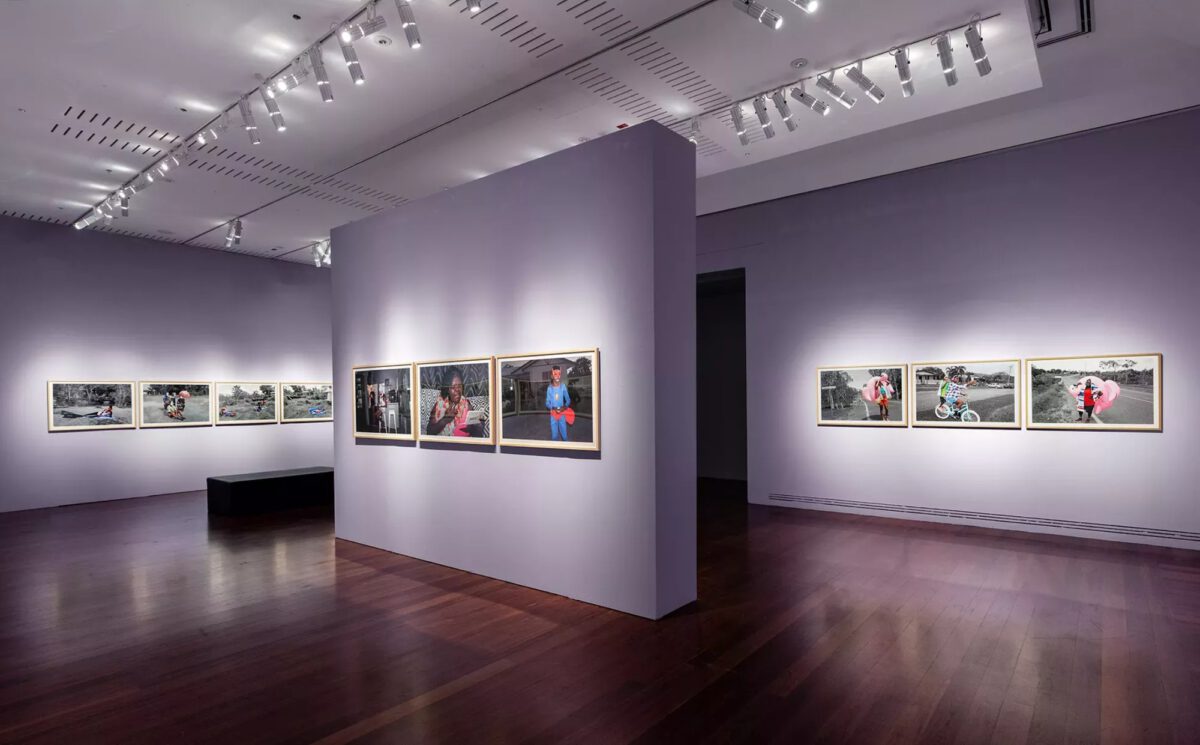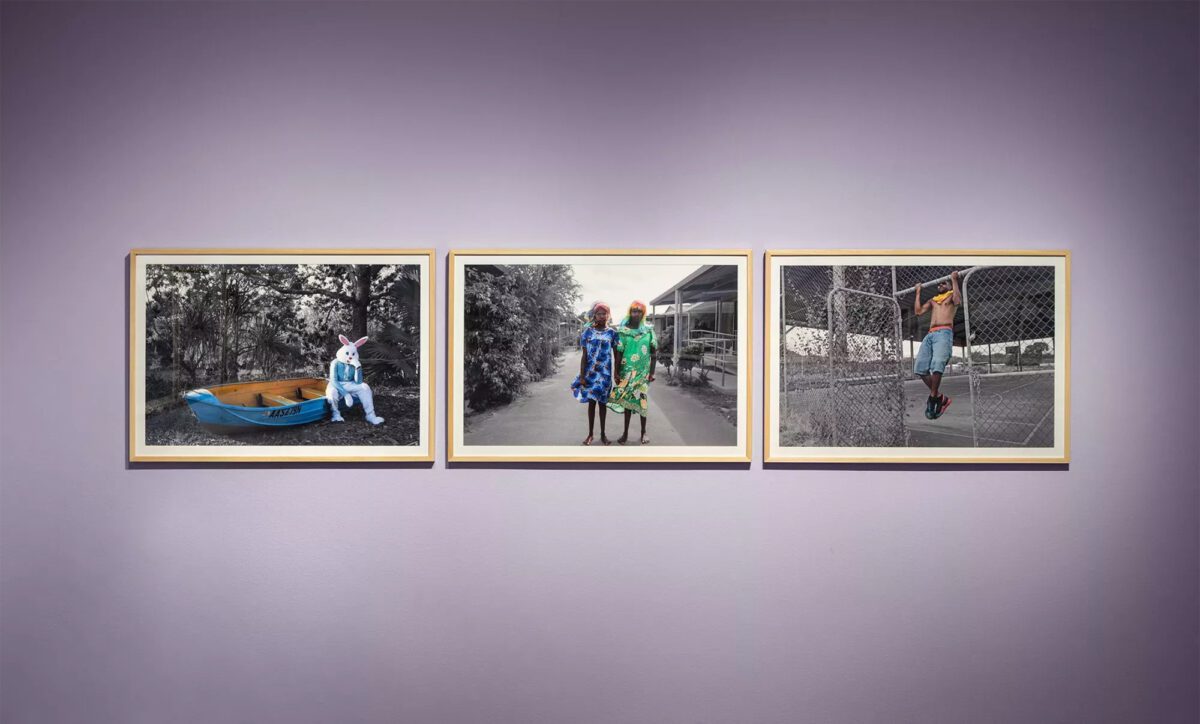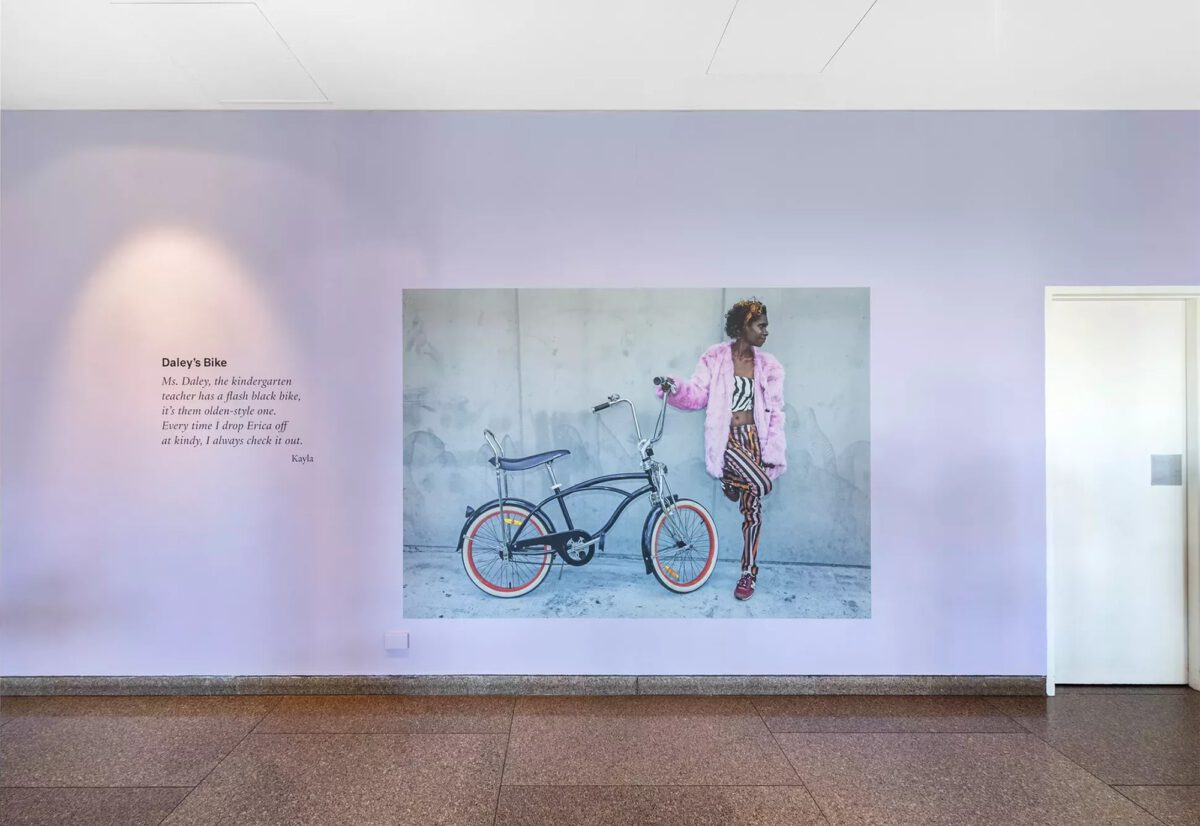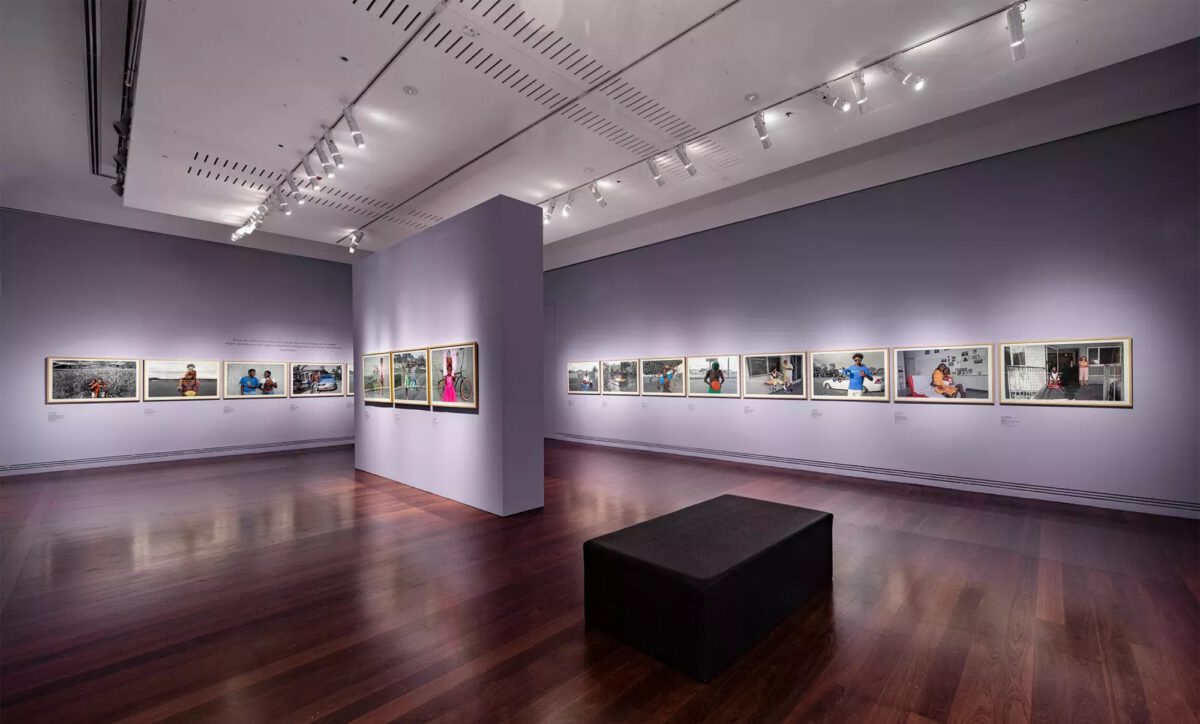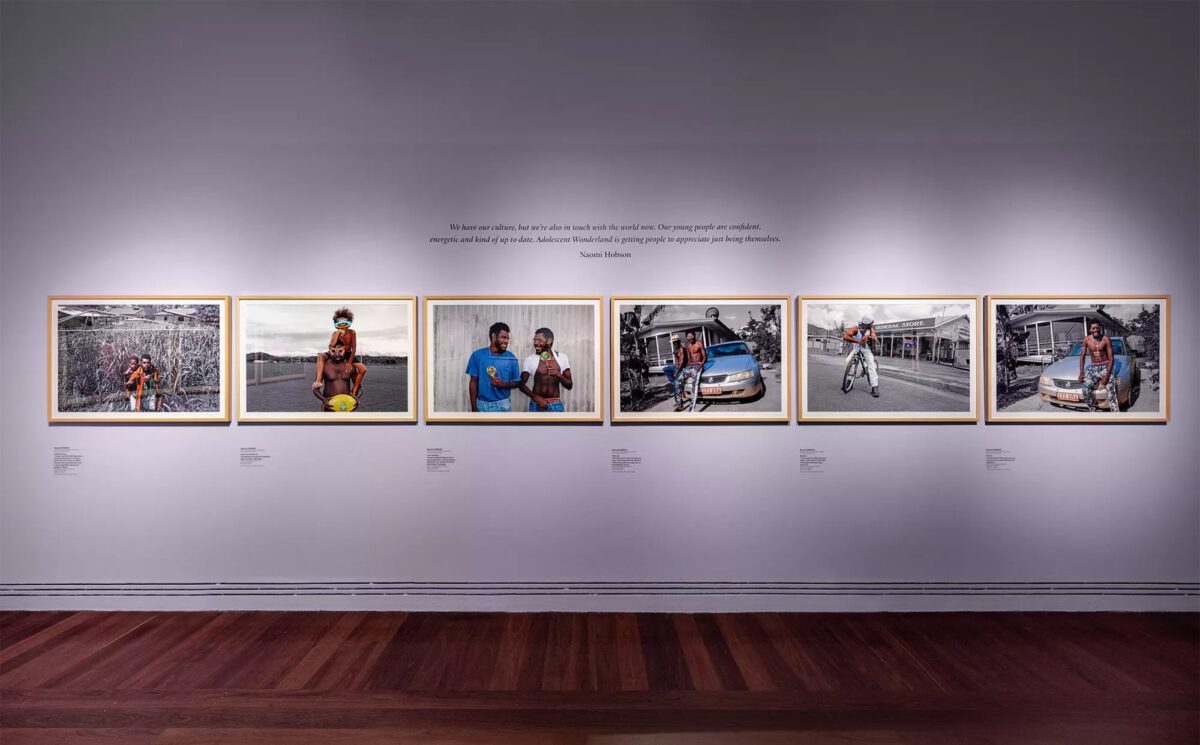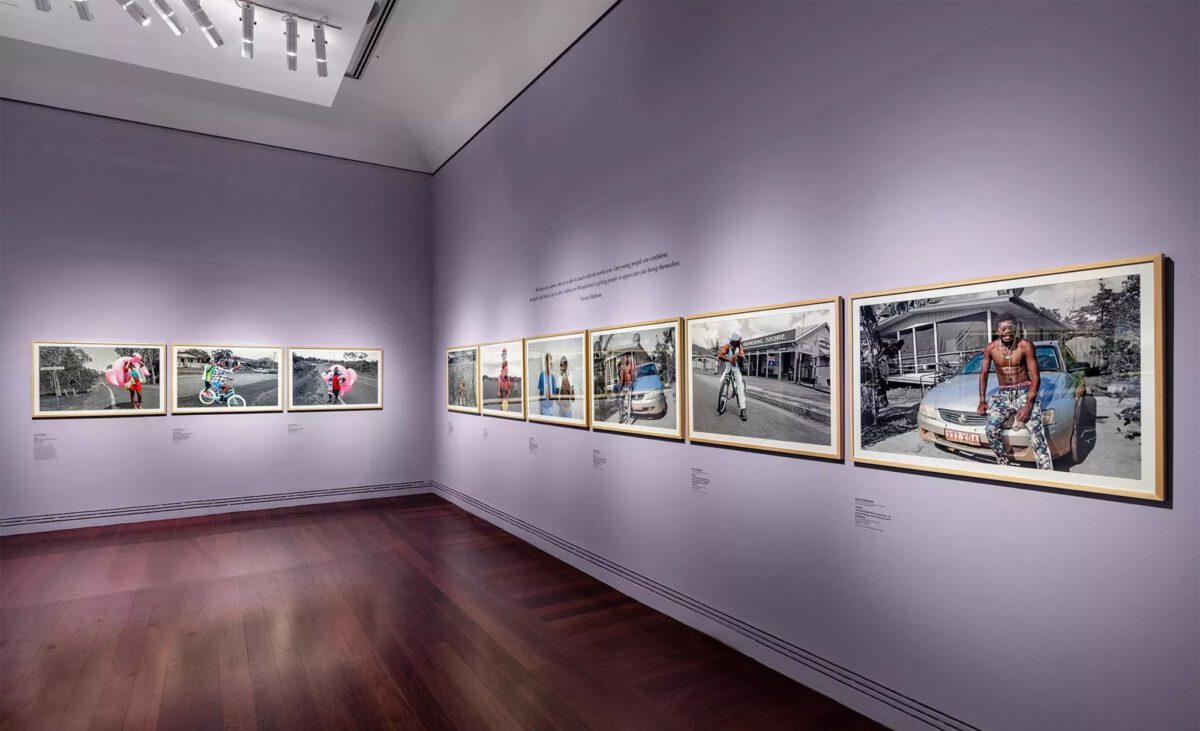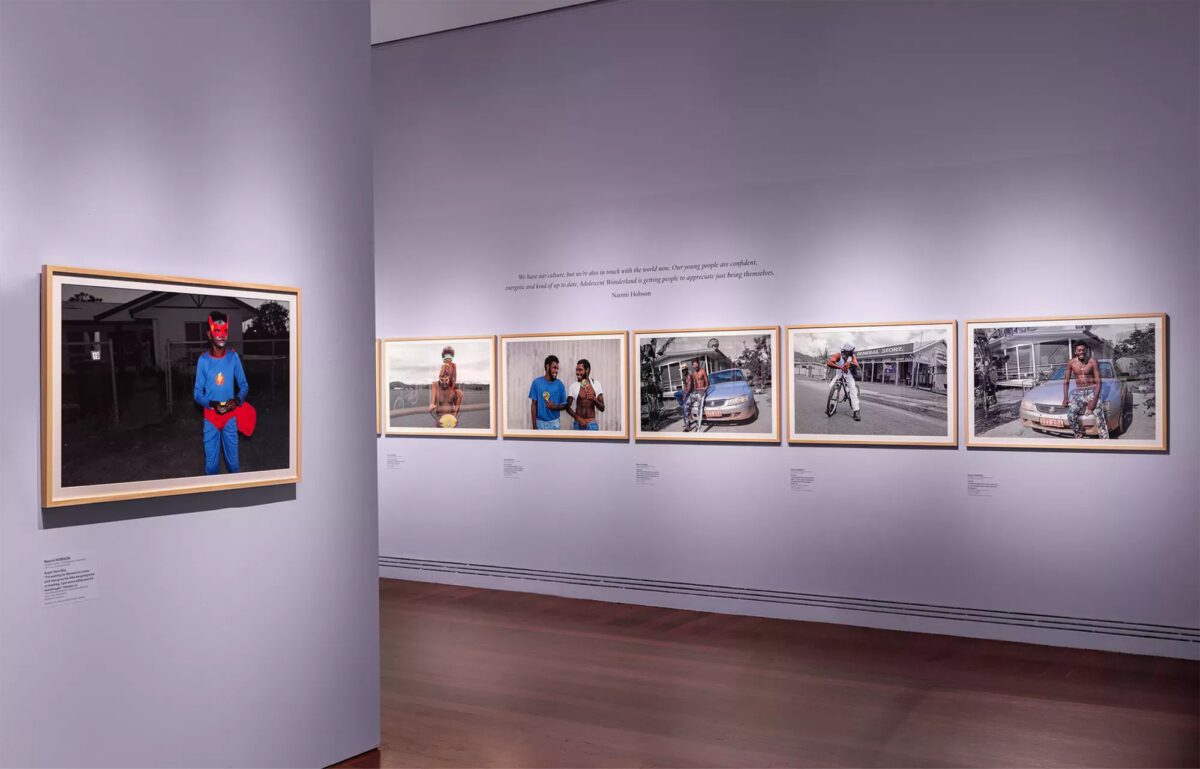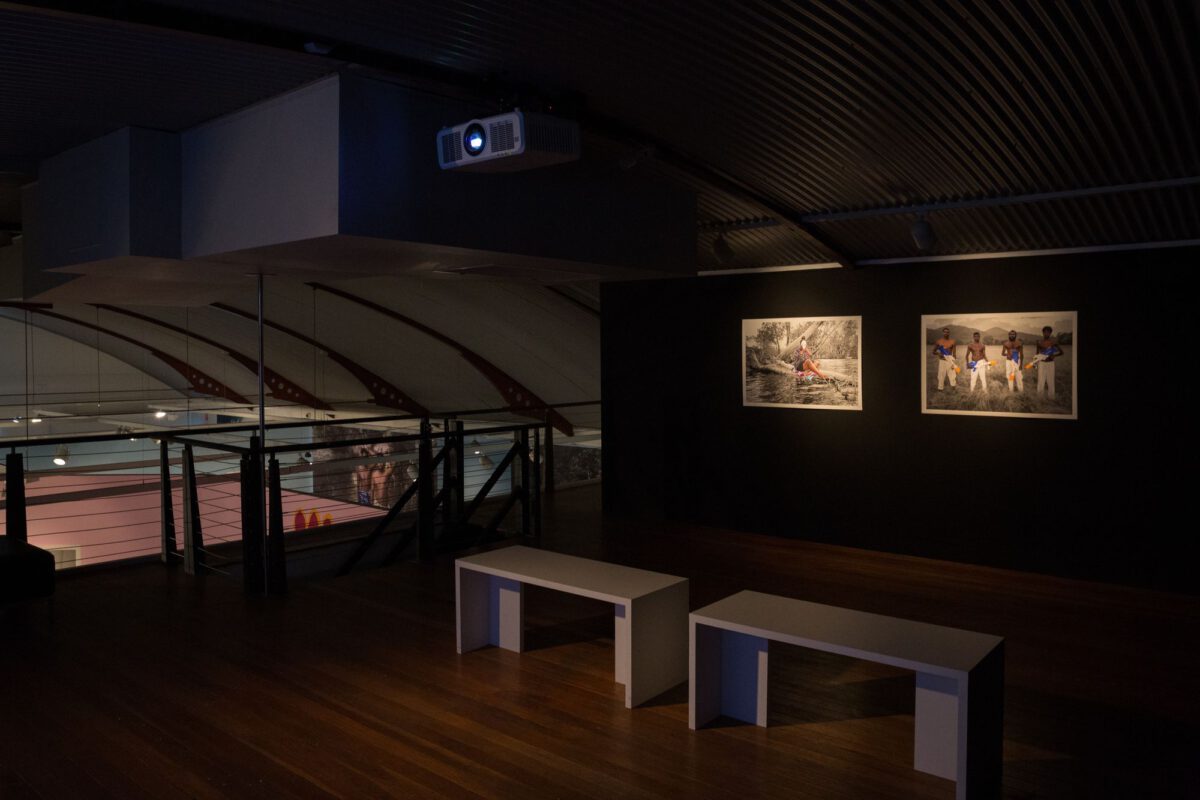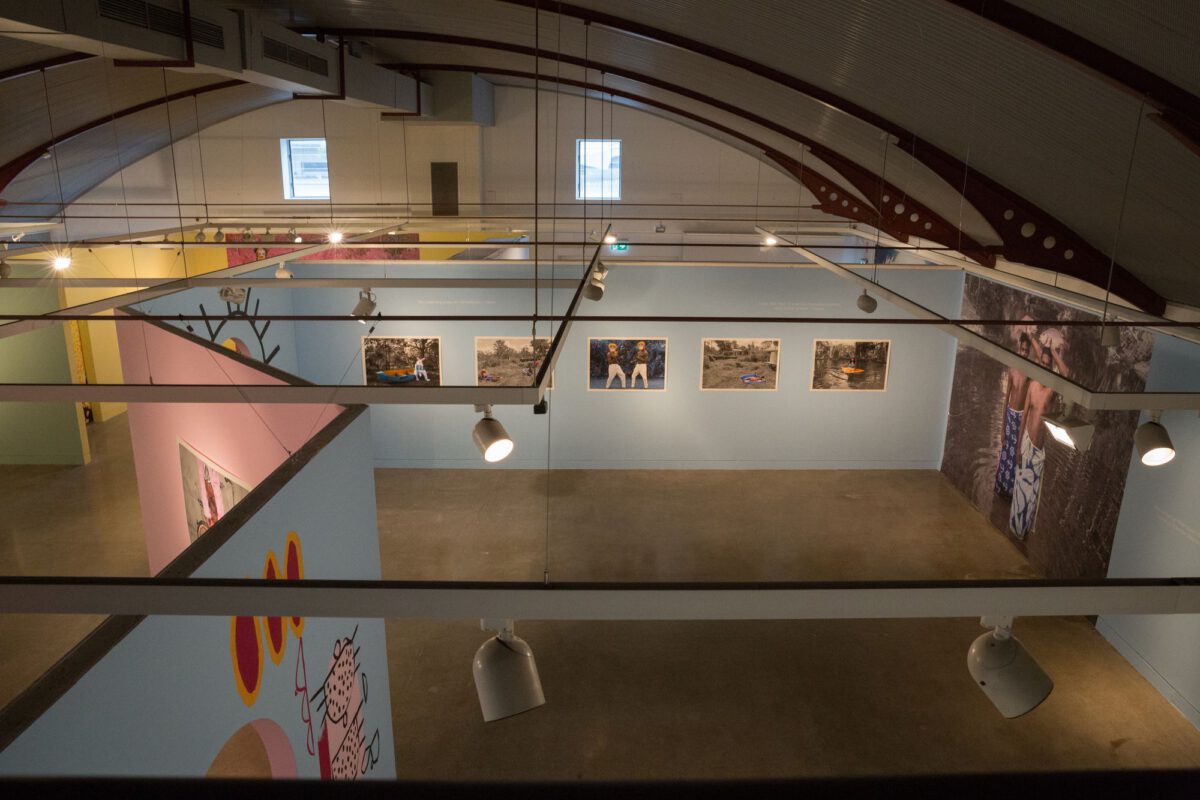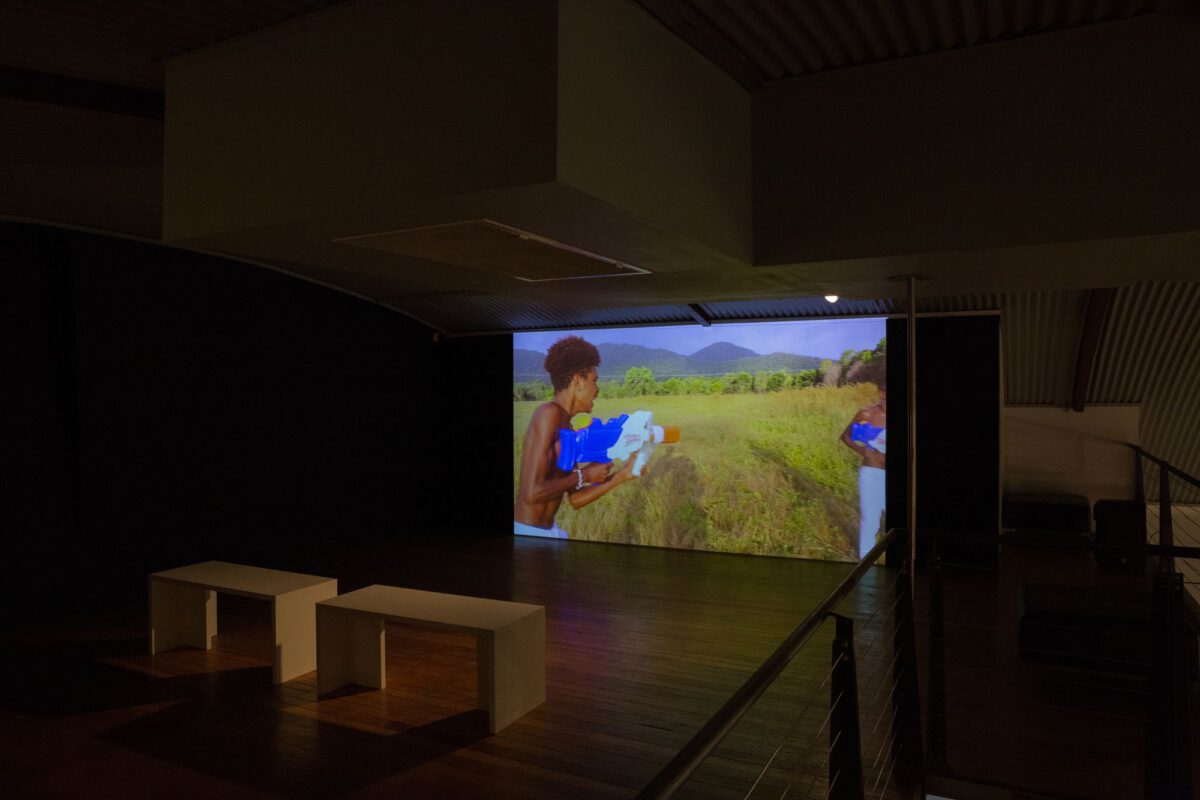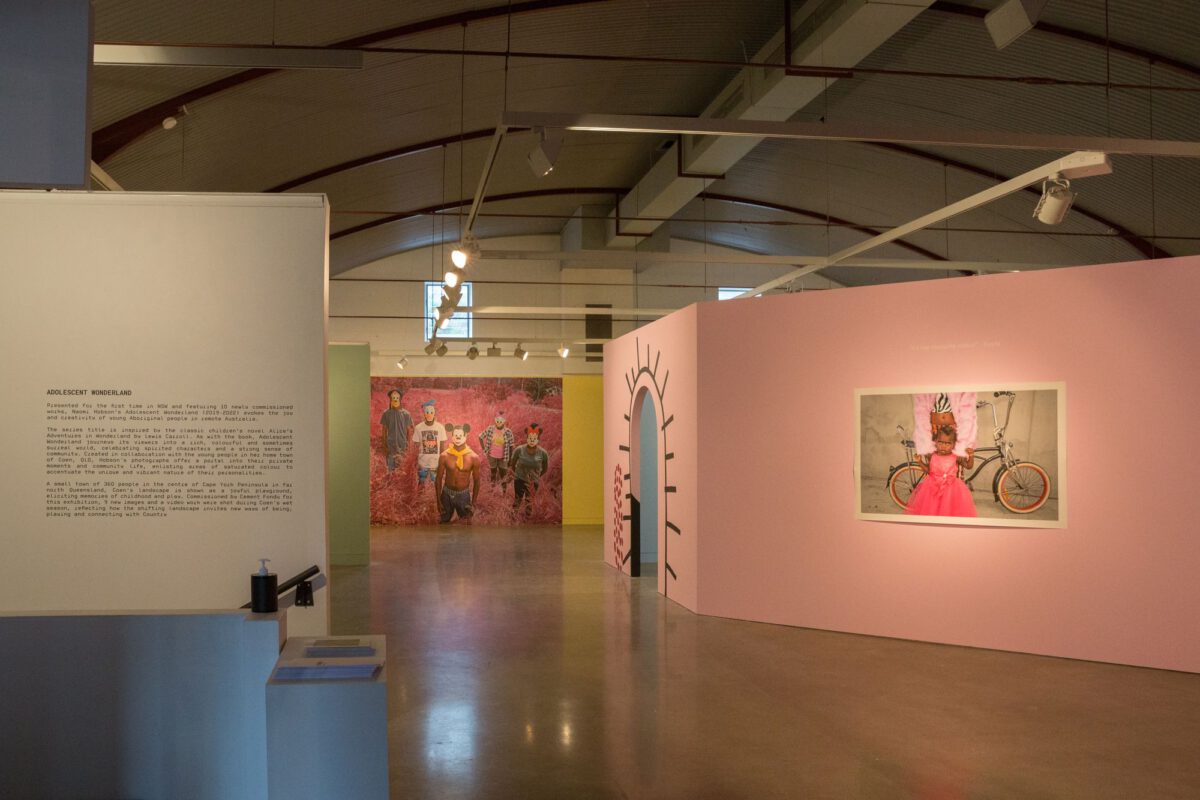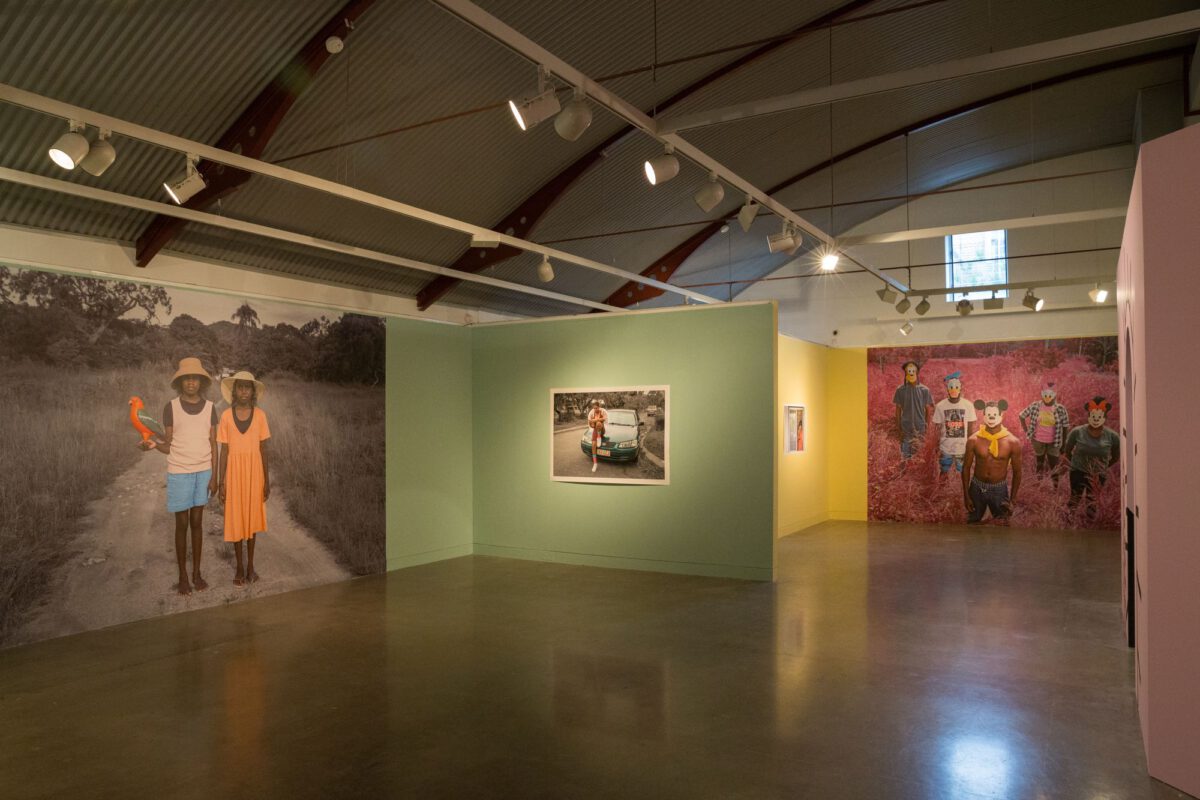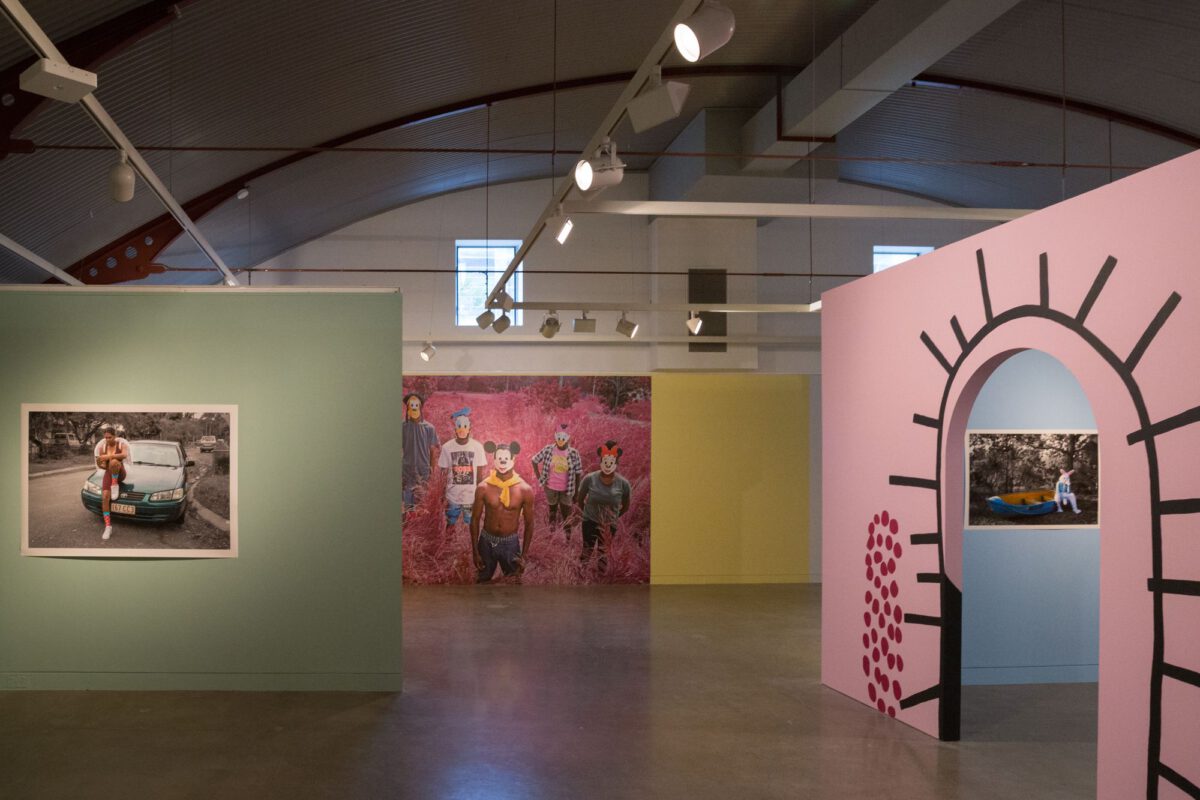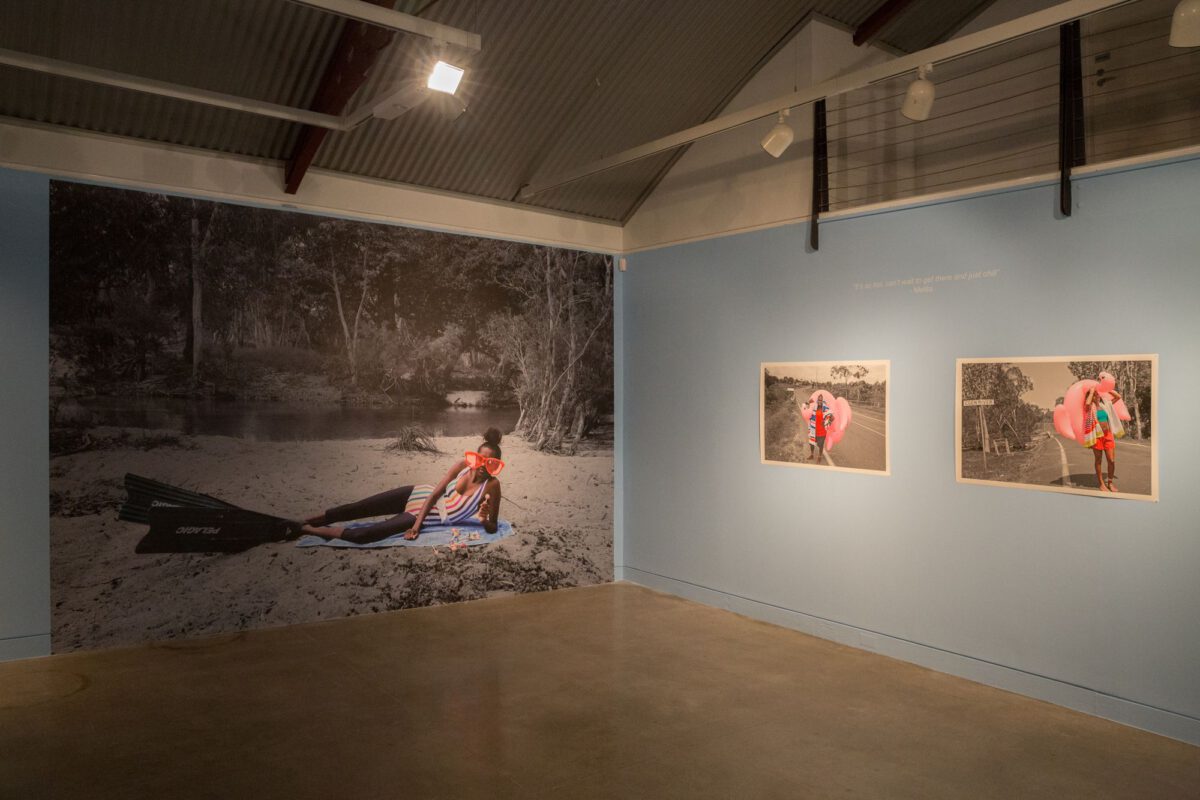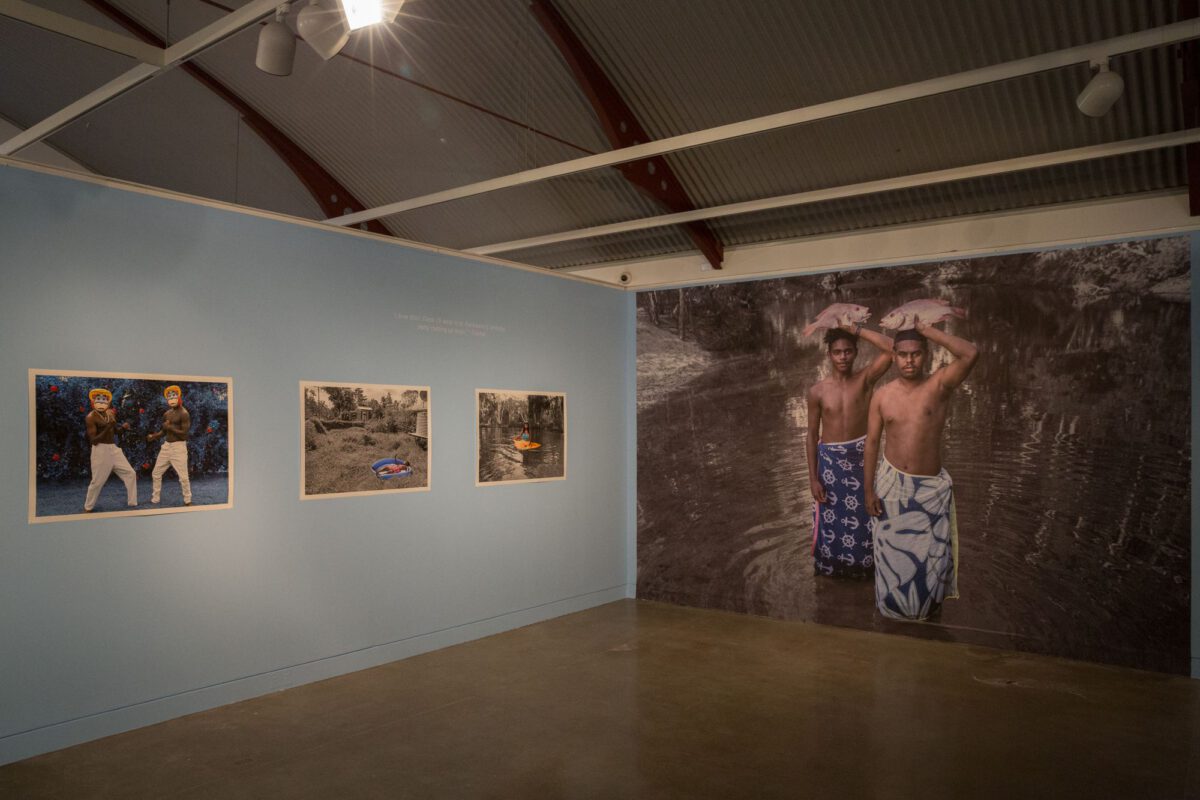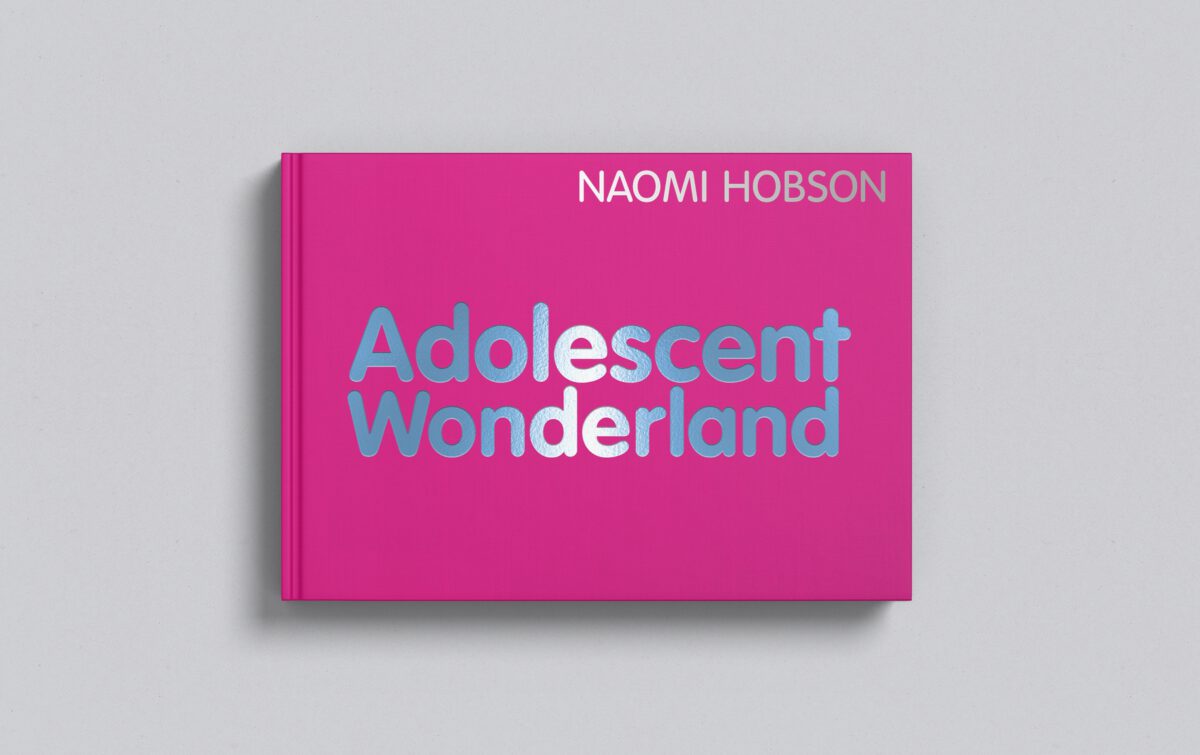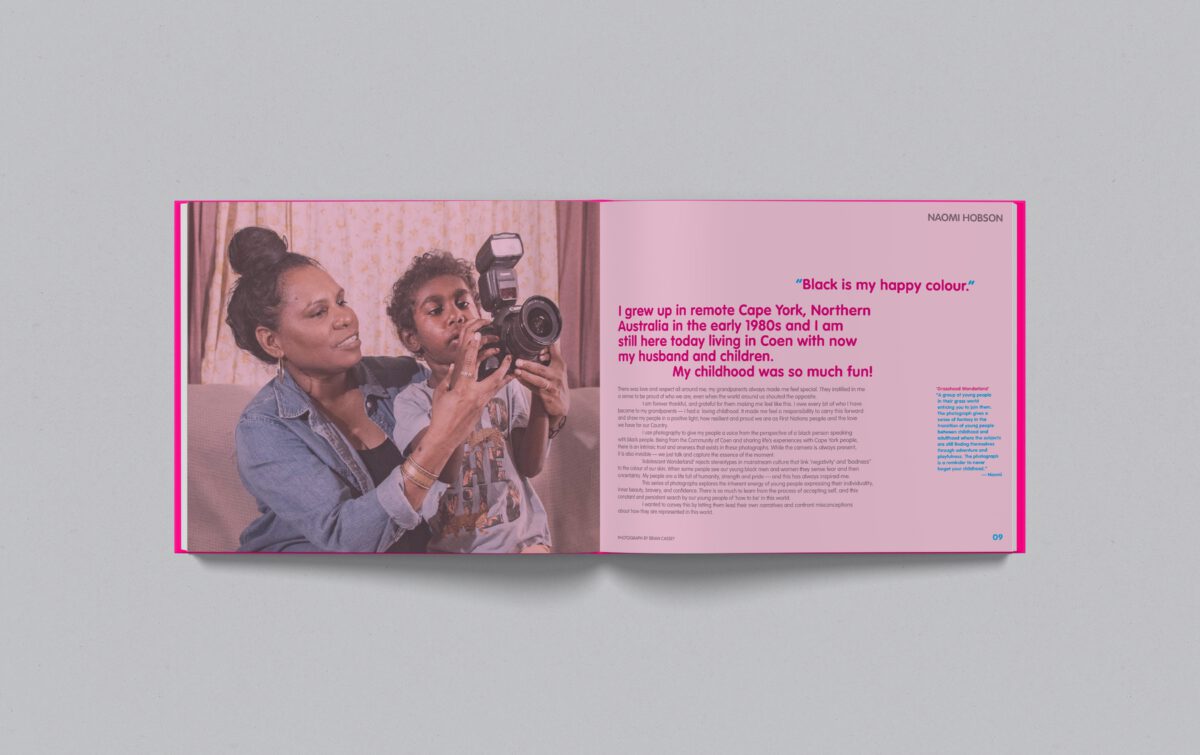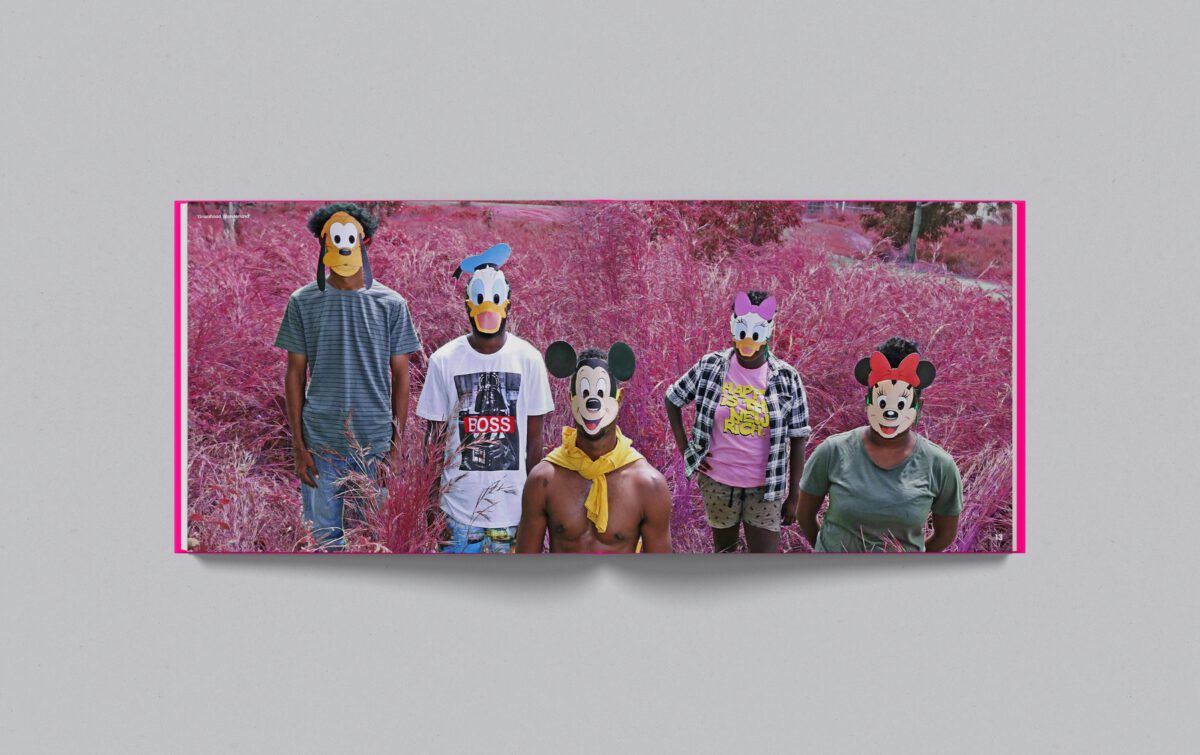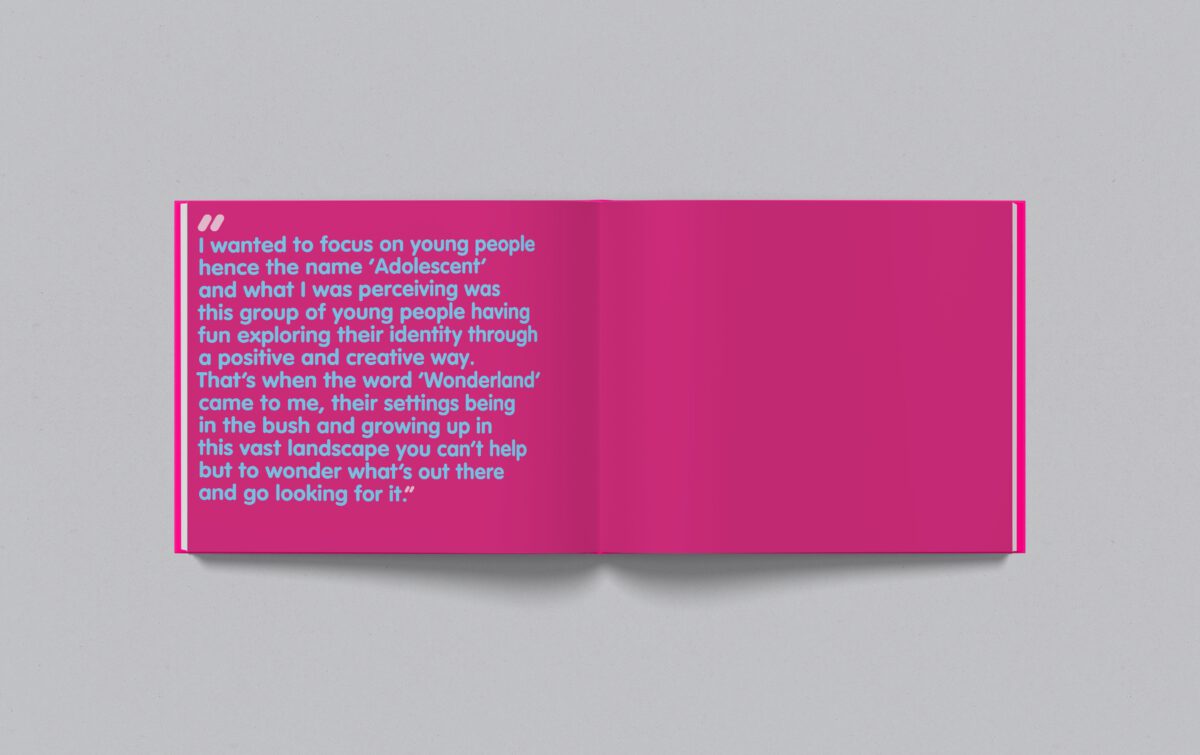Adolescent Wonderland
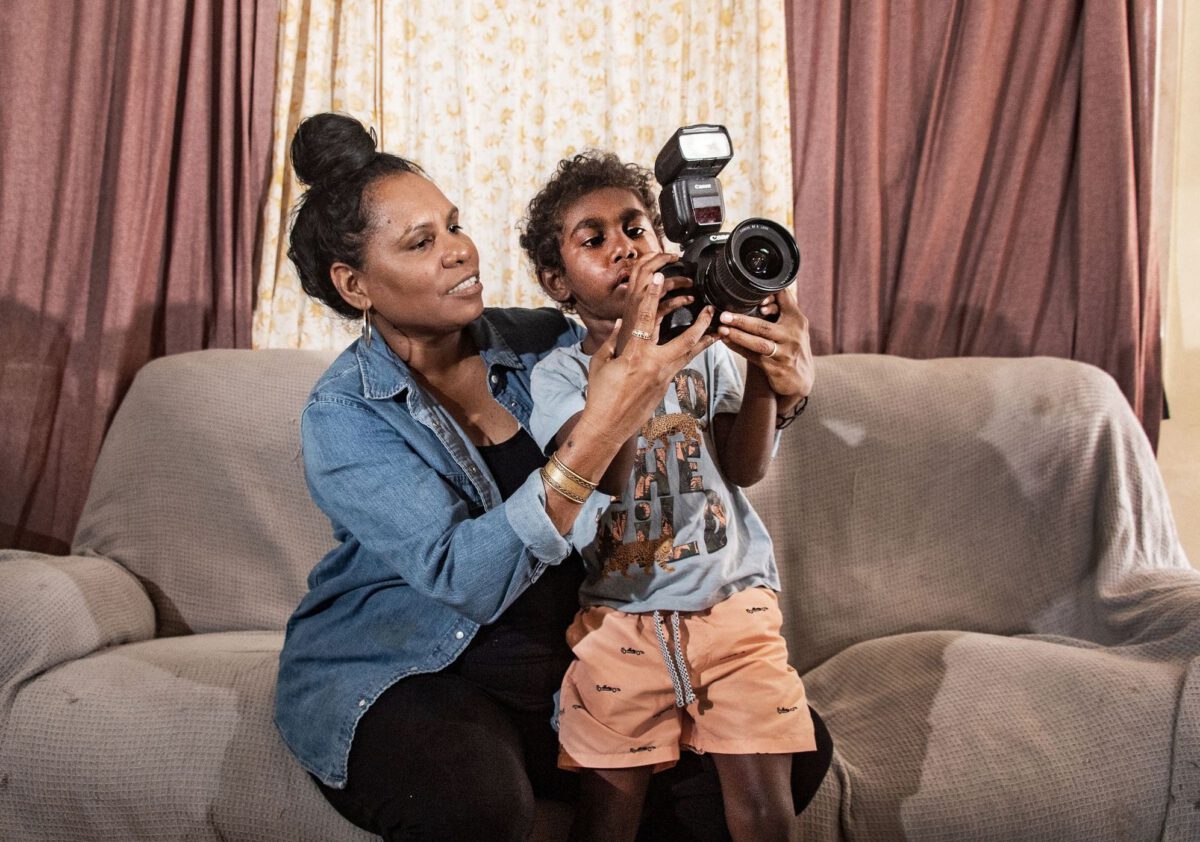
In the hands of Naomi Hobson, photography is reframed. Photography has a long history as a colonising agent, used to measure and define Aboriginal people, and to record their incarceration, but for Naomi it is simply a means of presenting the colourful daily life in her community of Coen, on Cape York Peninsula.”
Nici Cumpston OAM
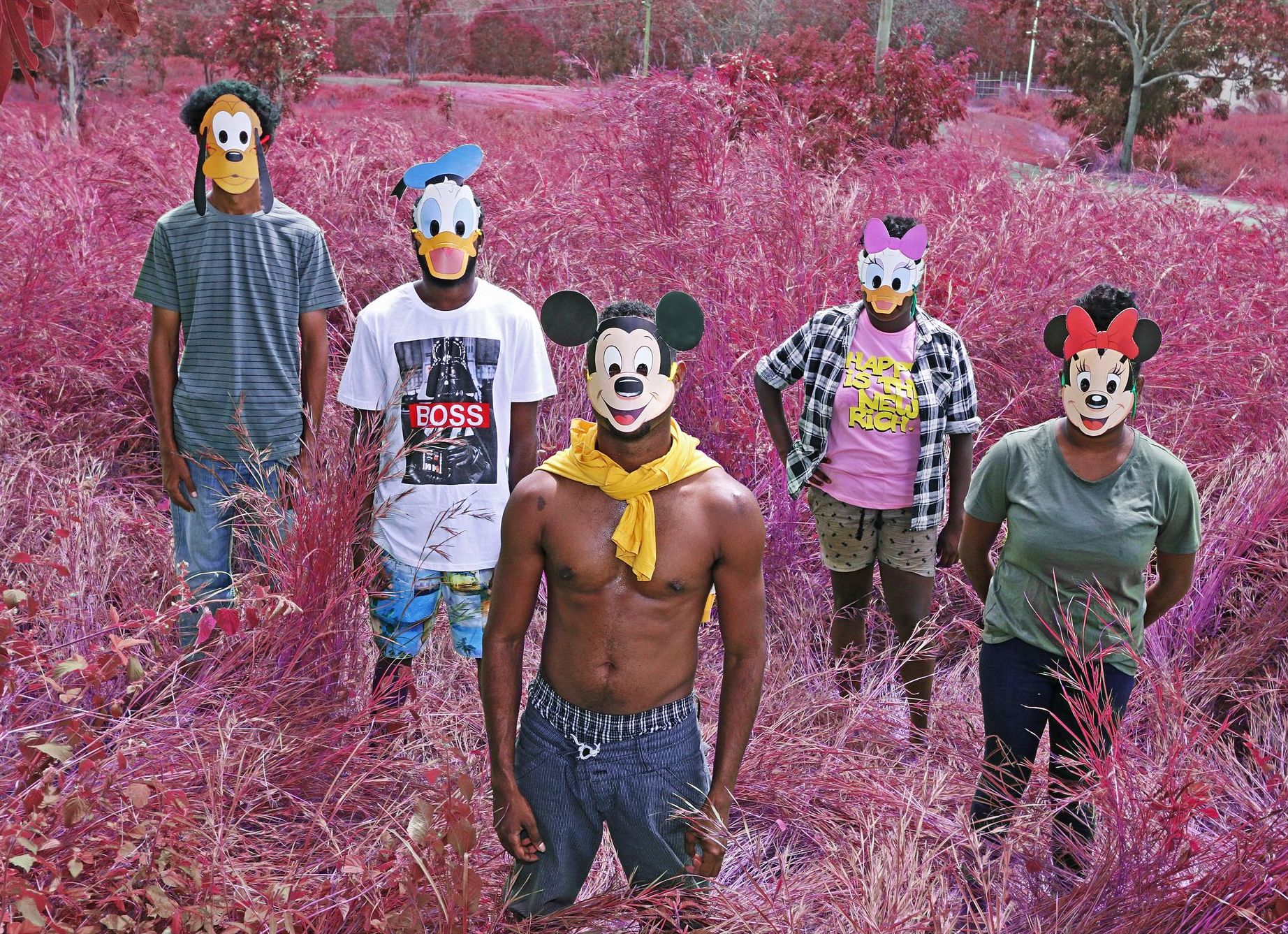
I grew up with love and respect all around me. I still see this and it makes me feel a responsibility to show my people in a positive light. My art reflects my Country, my culture, and my people. I use photography to give my people a voice from the perspective of a black person speaking with black people.”
Naomi
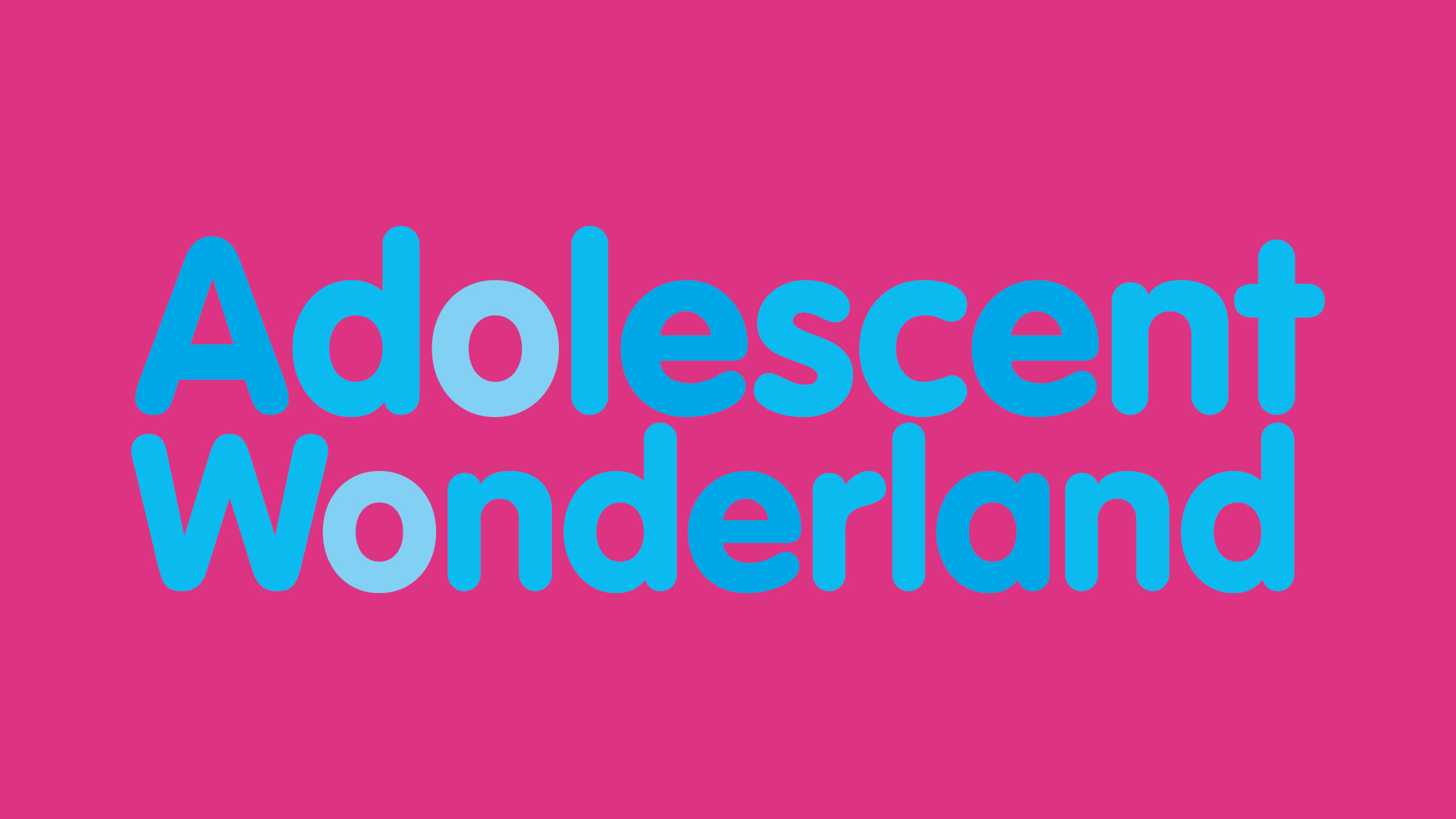
Black is my happy colour. I grew up in remote Cape York, Northern Australia in the early 1980s and I am still here today living in Coen with now my husband and children. My childhood was so much fun!
There was love and respect all around me; my grandparents always made me feel special. They instilled in me a sense to be proud of who we are, even when the world around us shouted the opposite.
I am forever thankful, and grateful for them making me feel like this. I owe every bit of who I have become to my grandparents — I had a loving childhood. It made me feel a responsibility to carry this forward and show my people in a positive light; how resilient and proud we are as First Nations people and the love we have for our Country.
I use photography to give my people a voice from the perspective of a black person speaking with black people. Being from the Community of Coen and sharing life’s experiences with Cape York people, there is an intrinsic trust and oneness that exists in these photographs. While the camera is always present, it is also invisible — we just talk and capture the essence of the moment.
‘Adolescent Wonderland’ rejects stereotypes in mainstream culture that link ‘negativity’ and ‘badness” to the colour of our skin. When some people see our young black men and women they sense fear and then uncertainty. My people are a life full of humanity, strength and pride — and this has always inspired me.
This series of photographs explores the inherent energy of young people expressing their individuality, inner beauty, bravery, and confidence. There is so much to learn from the process of accepting self, and this constant and persistent search by our young people of ‘how to be’ in this world.
I wanted to convey this by letting them lead their own narratives and confront misconceptions about how they are represented in this world.
My art reflects my environment, my community and my people. I use photography to create a voice for my people. I realised that most photographs out there were not shooting content that came from me and my people, as a First Nations and a Community person’s perspective from inside Community. So I felt a responsibility to tell our stories about who we are as people, as black people, as First Nations people. We are all valuable.
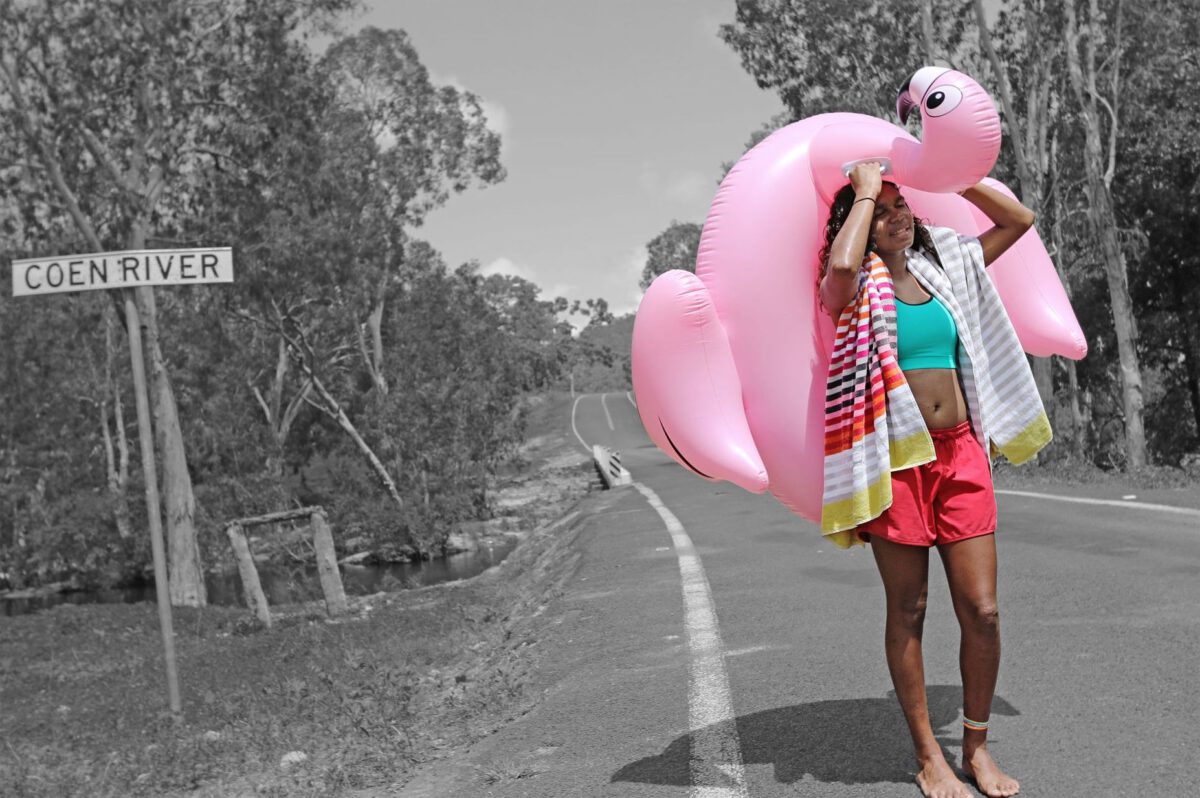
“OMG! This is heavier than it looks!”
Alaina
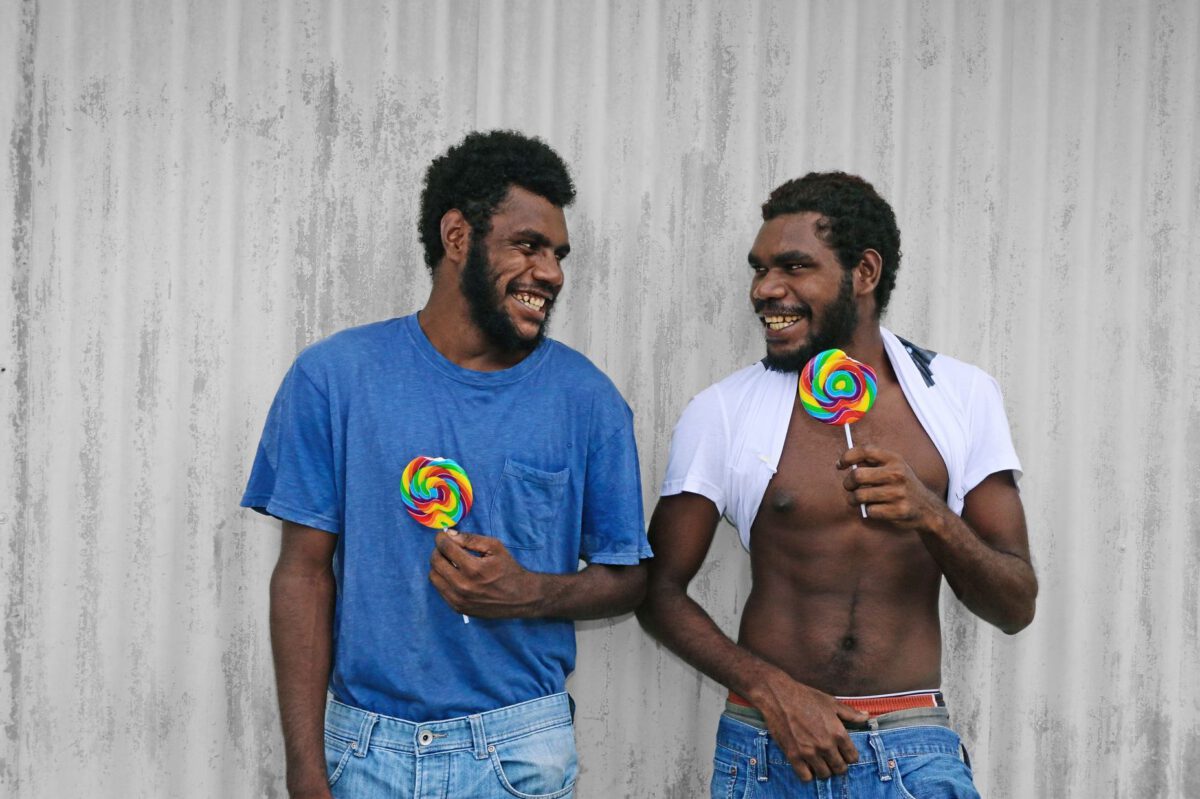
“Donna’s selling lollypops,
frozen cups and popcorn.
I got my lollypop
and Marky’s for free and
she didn’t even notice.”
Puchaanu
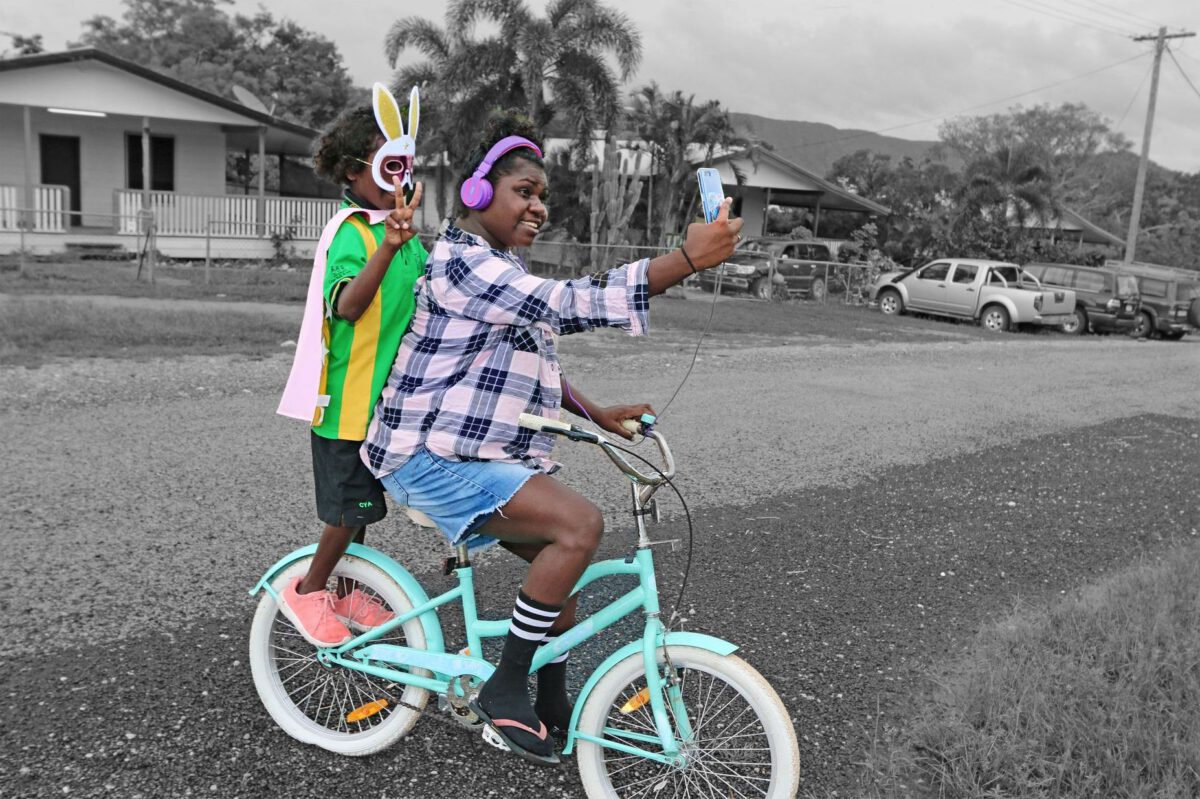
“Laine always wants to
go for a ride on her bike,
it’s her bike
but she can’t ride it yet
it’s too big for her
she keeps falling off it
so I take her for rides
down the road.”
Katarina
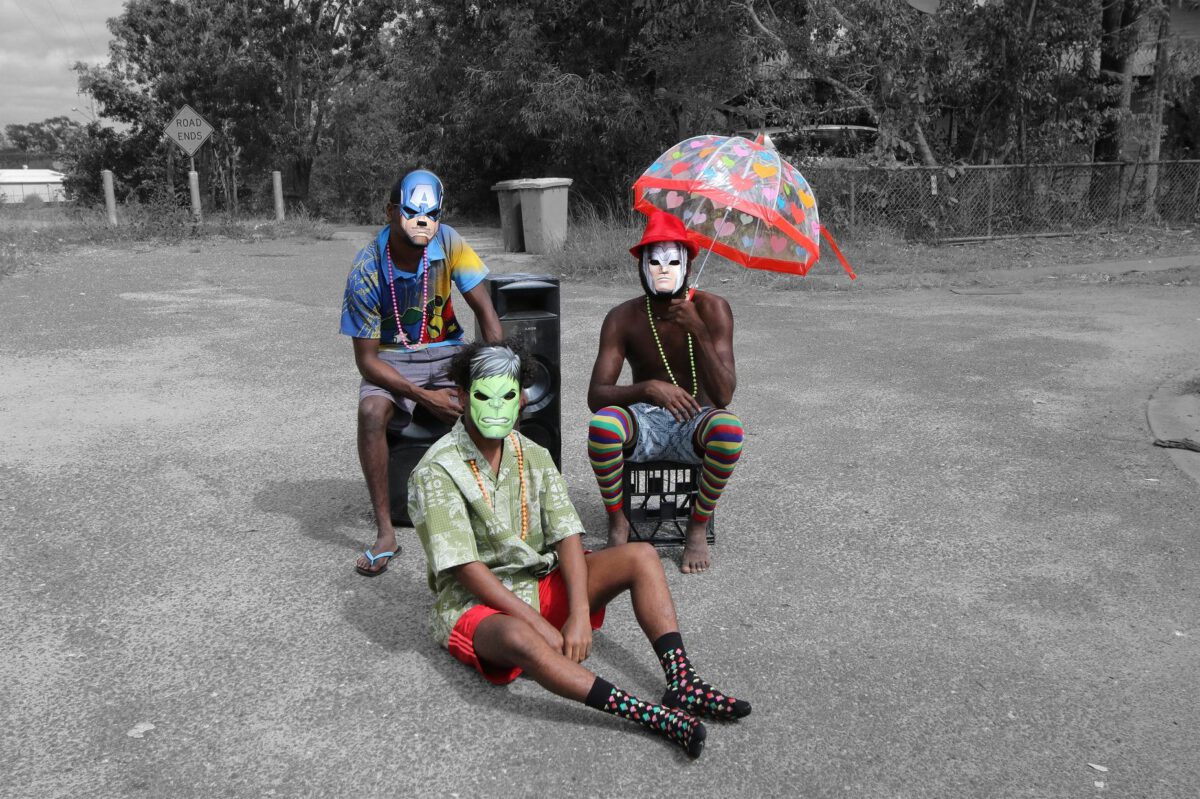
“Where the party at...?”
Harry
It’s showing that nurture and love from an elder sister to a younger sister, and it’s capturing that playfulness that I see in my community ... you see a lot of that from the older siblings to their younger siblings displaying affection, expressing joy in a playful and caring way for each other, families are close, and that’s what is highlighted here; how important family is to us.”
Naomi
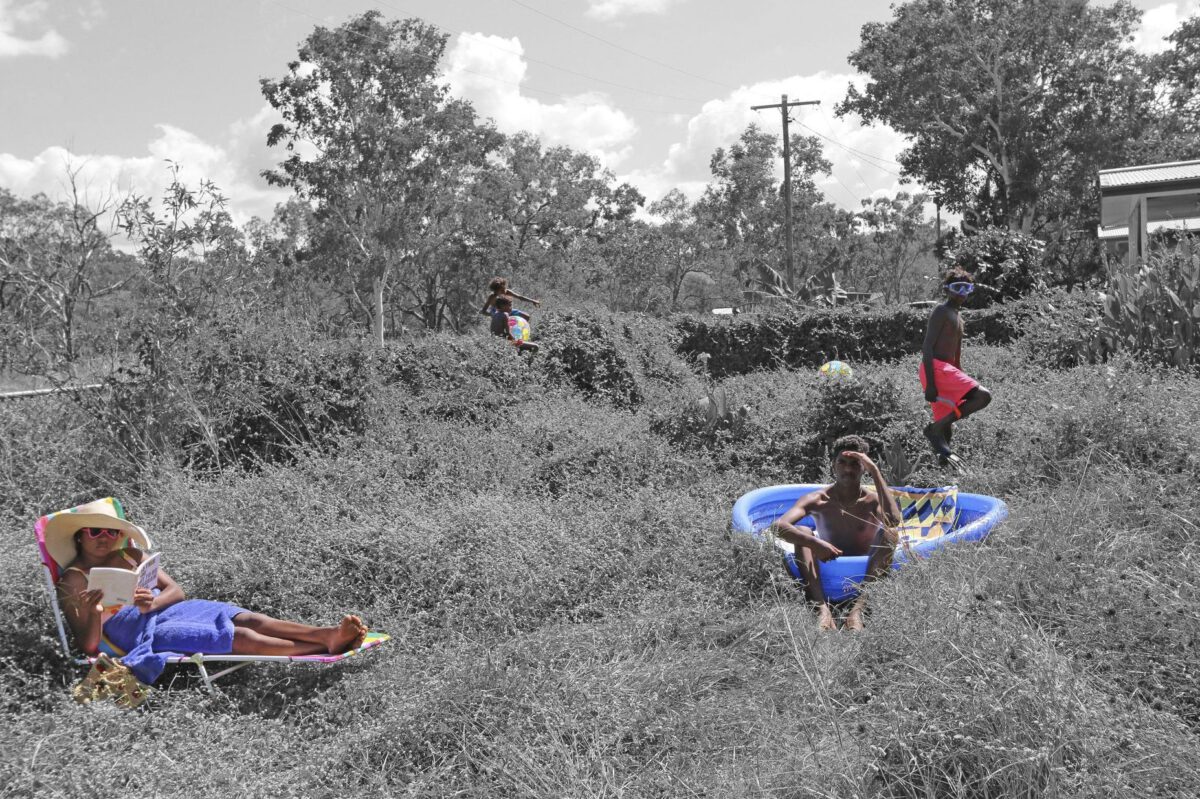
”No matter long grass, we still make fun”
Alaina
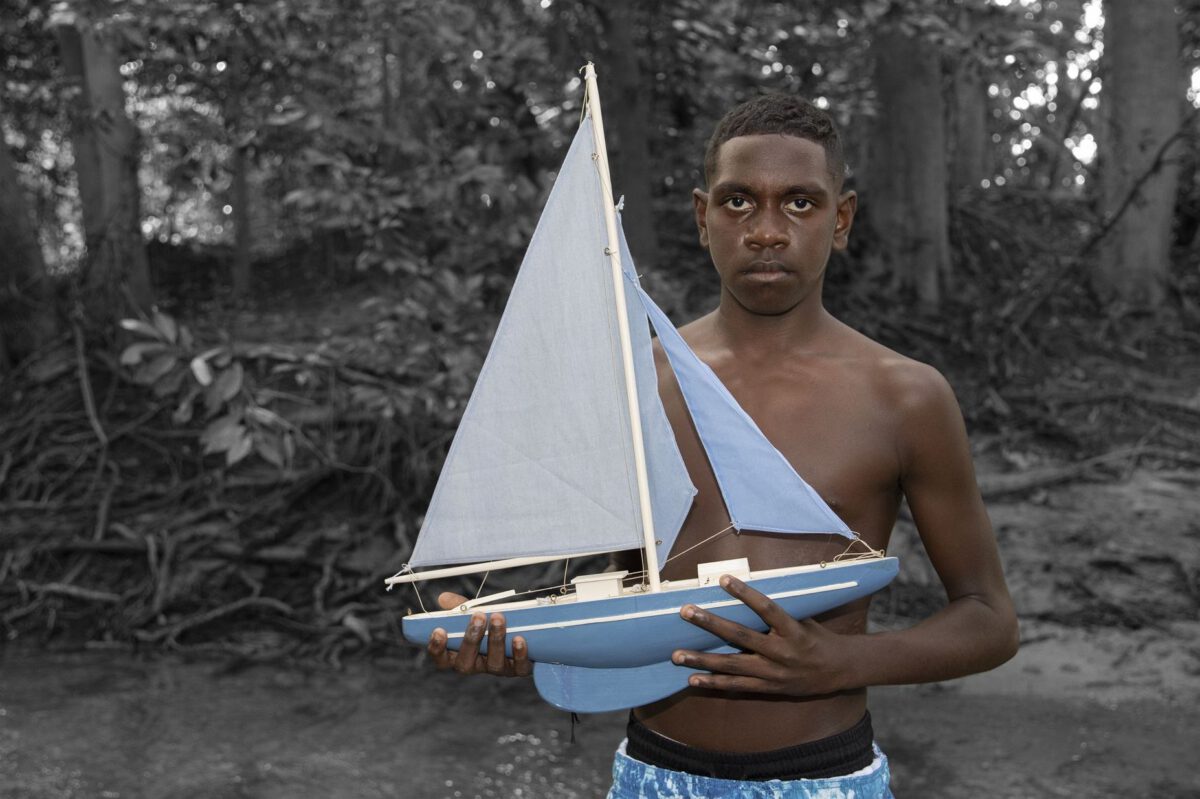
I like boats! My great, great grandfather
was a sea man, most of his life was lived out sea
on a pearl lugger boat diving for pearl shells.
Wakeem
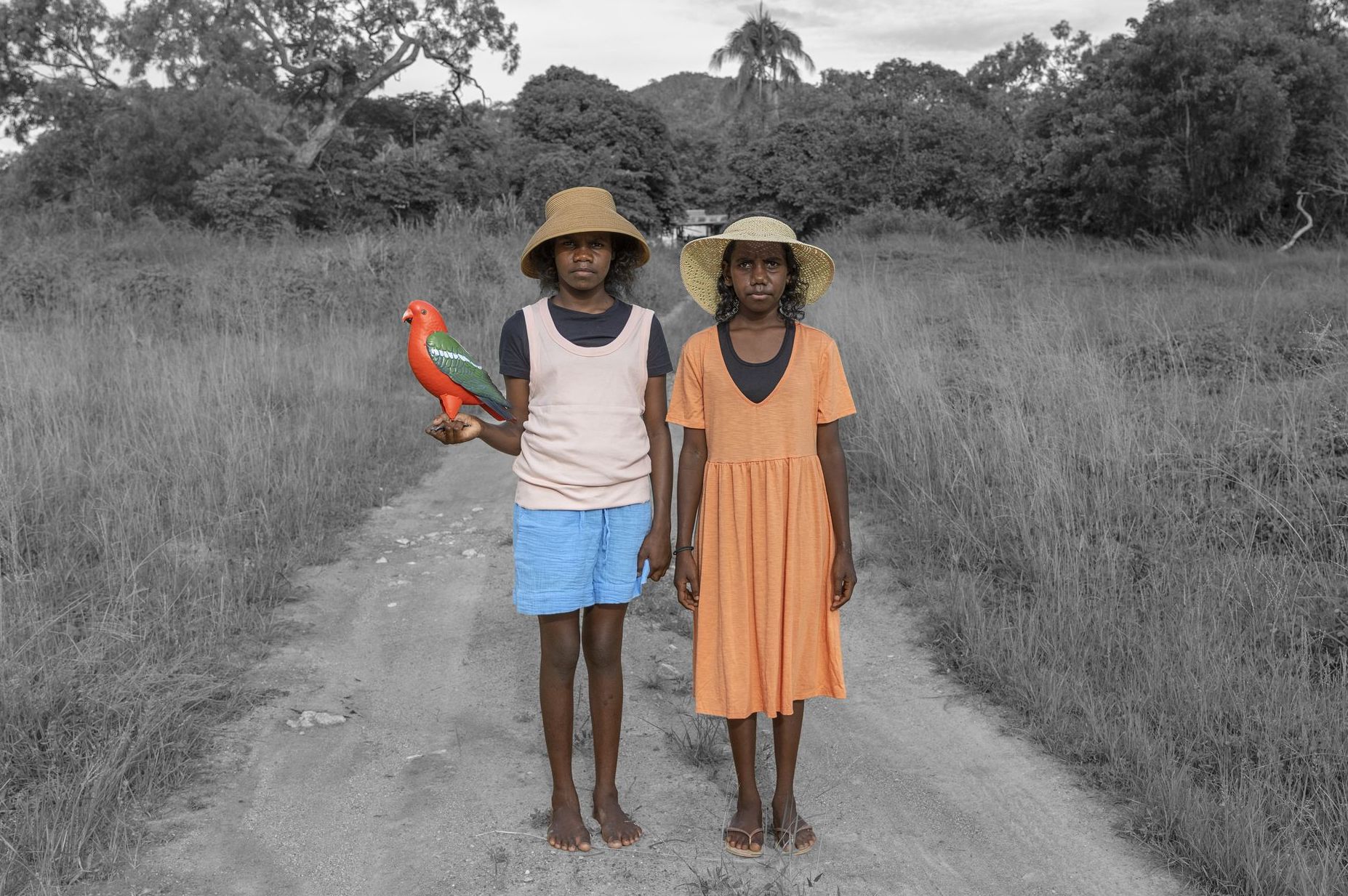
“We taking our garden parrot
to church with us today.”
Sonia
Adolescent Wonderland’ rejects stereotypes in mainstream culture that link ‘negativity’ and ‘badness’ to the colour of our skin. My people are alive, full of humanity, strength and pride — and this has always inspired me.”
Naomi
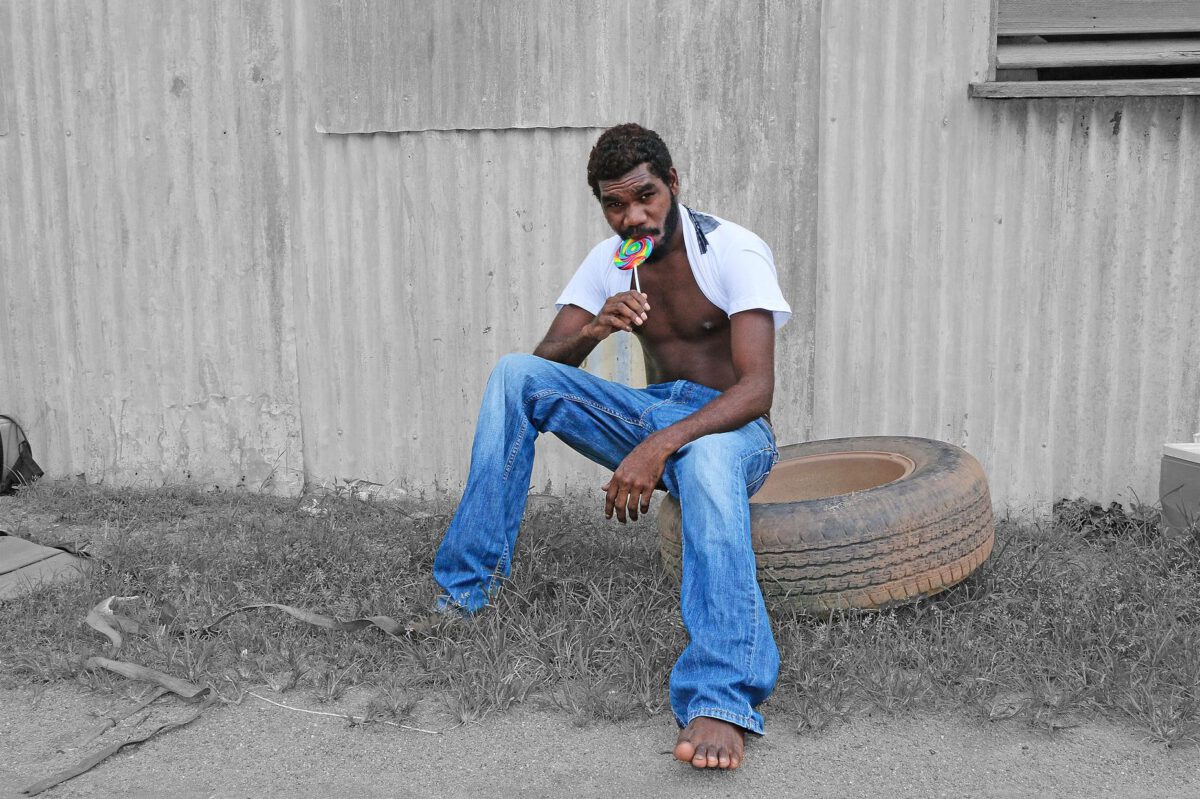
I’m enjoying this,
finding my zen,
one lollypop at a time.
Puchaanu
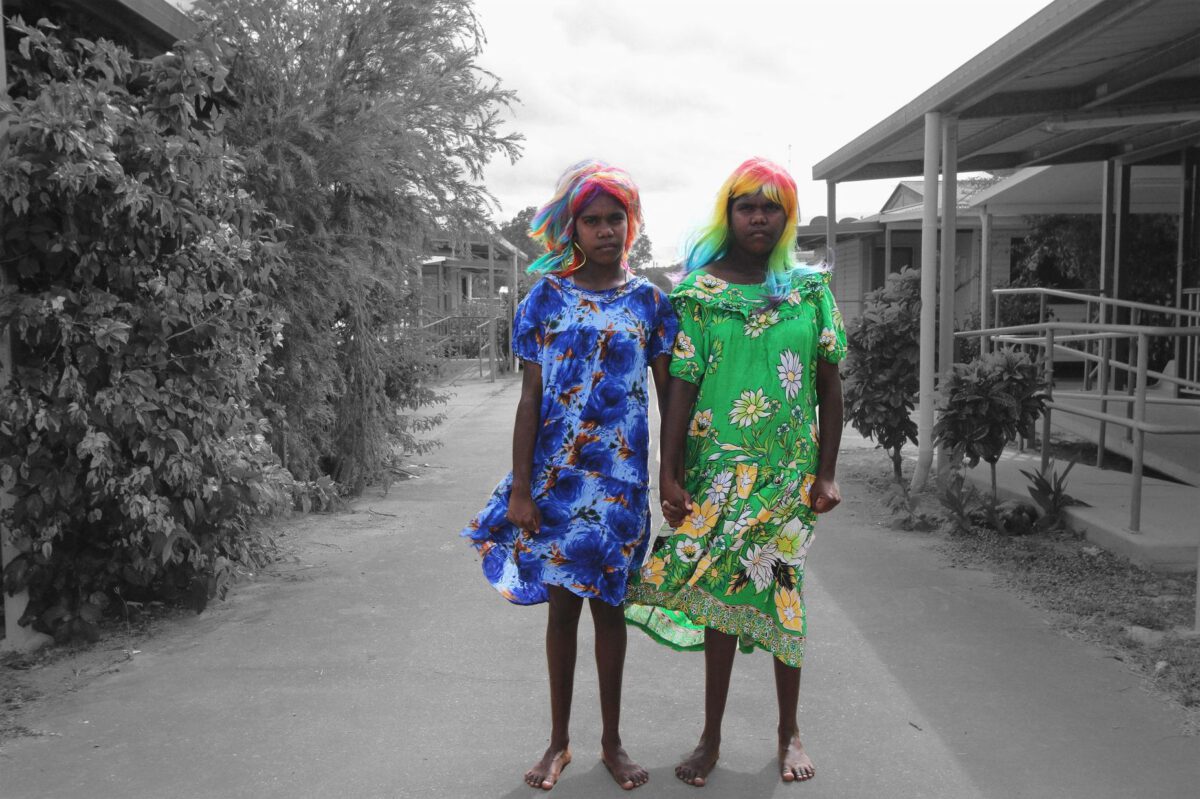
Donna brought us these wigs,
I wanted one first
and then Lexcine wanted one,
she always trying to copy me,
aye Lexcine
Ada
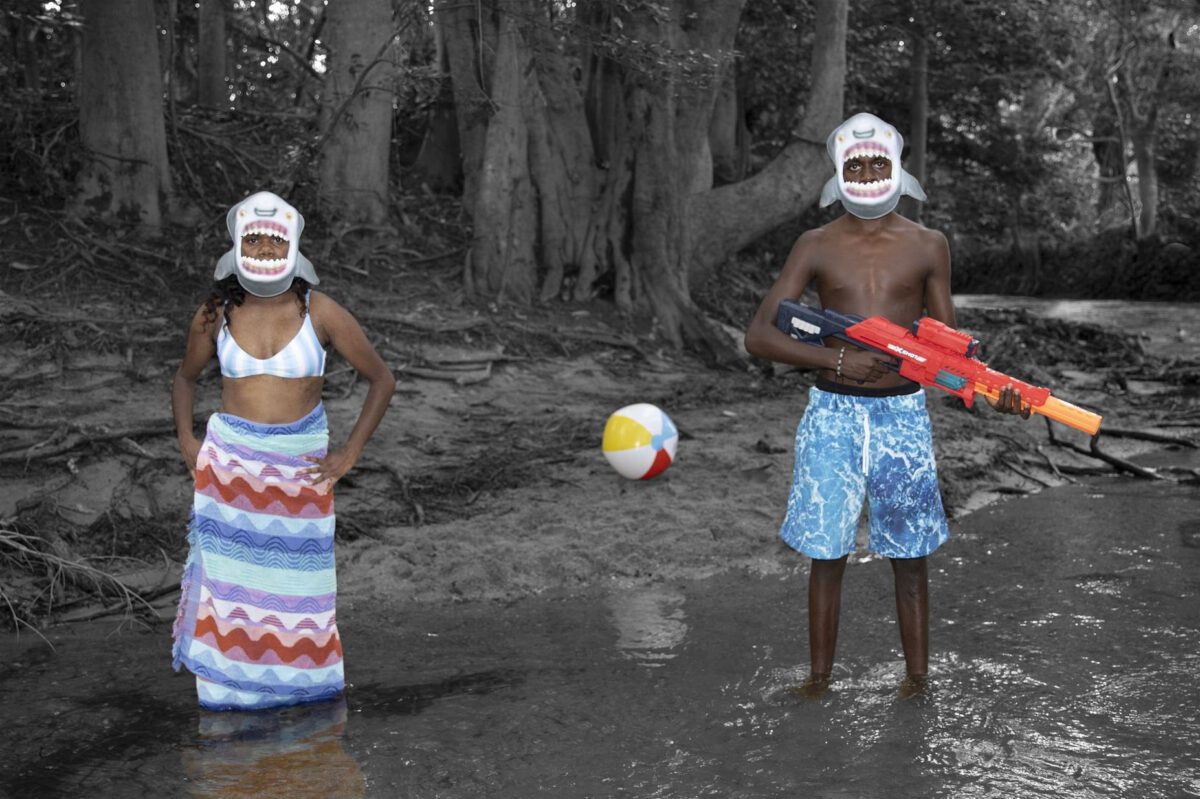
I am Sharkgirl, and he is Sharkboy,
and we are your friends.
Lexcine
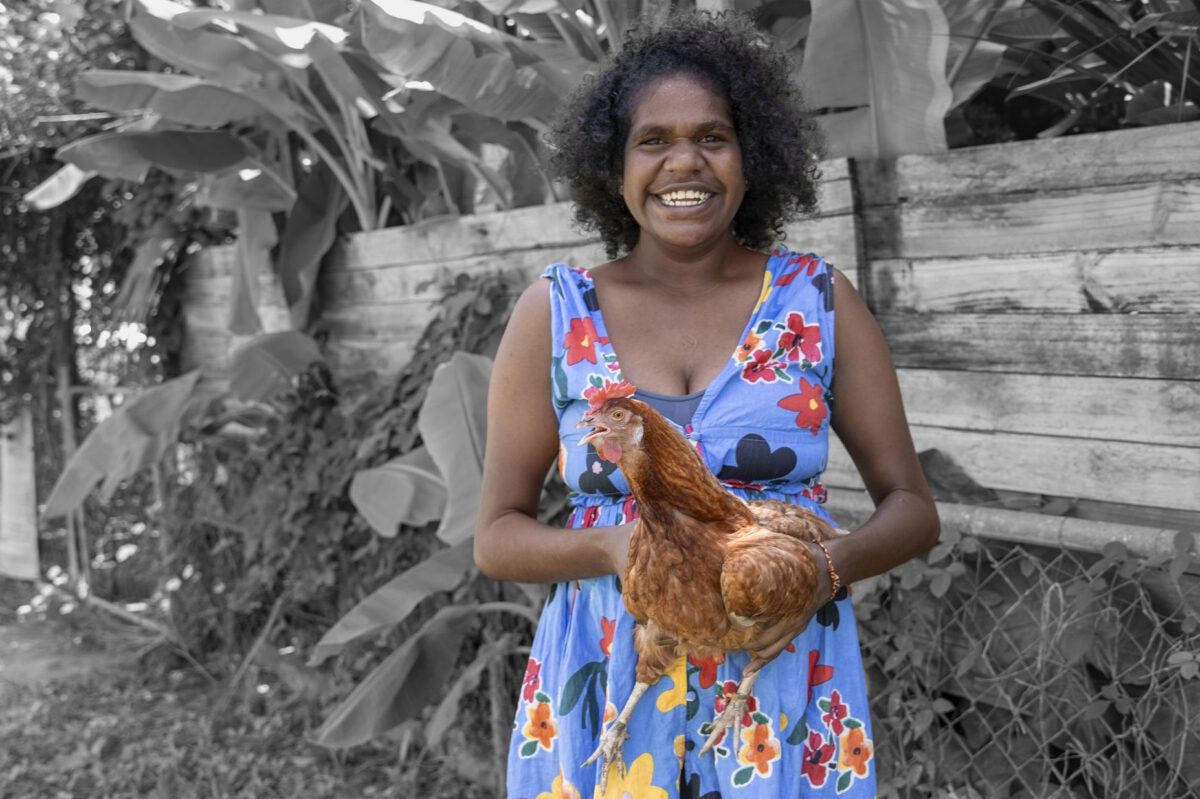
Meet Claire
she’s our family chicken,
she’s funny because
she always make me laugh.
Violet
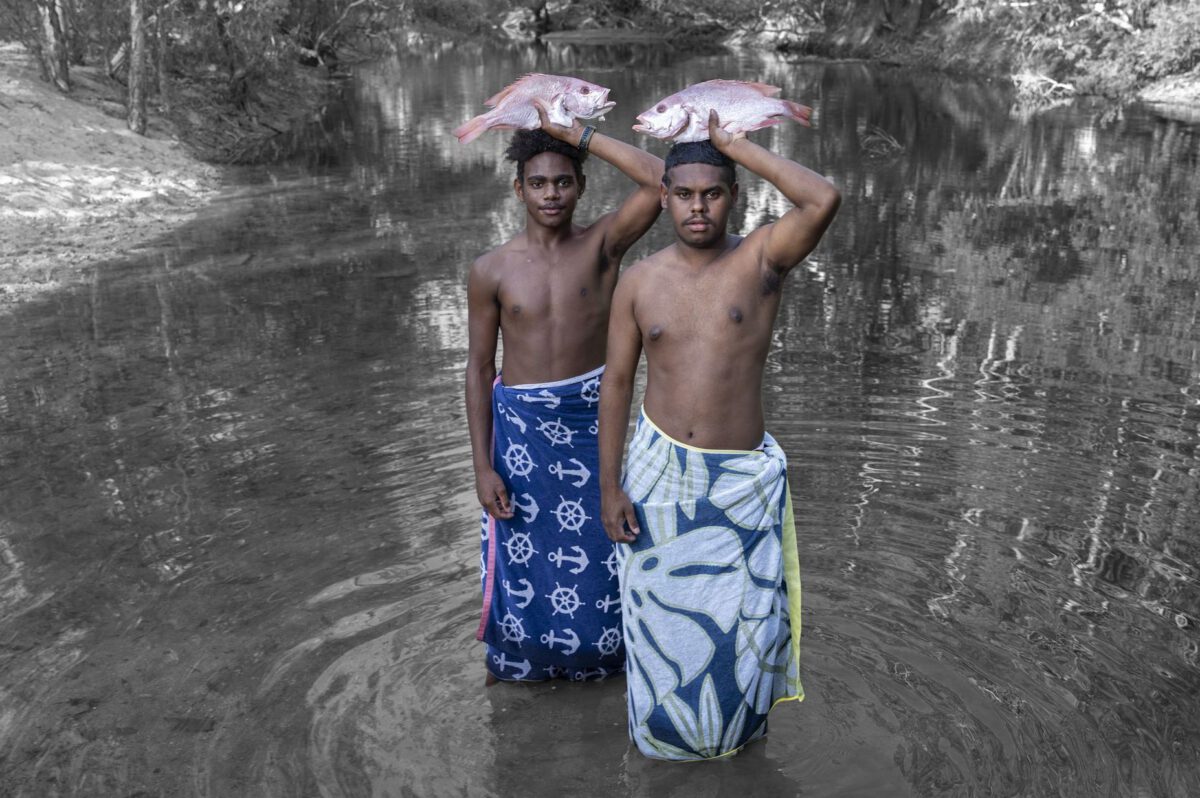
We loaded up
from down the arm,
plenty red bream
come up from
the freshwater flood.
Reggie
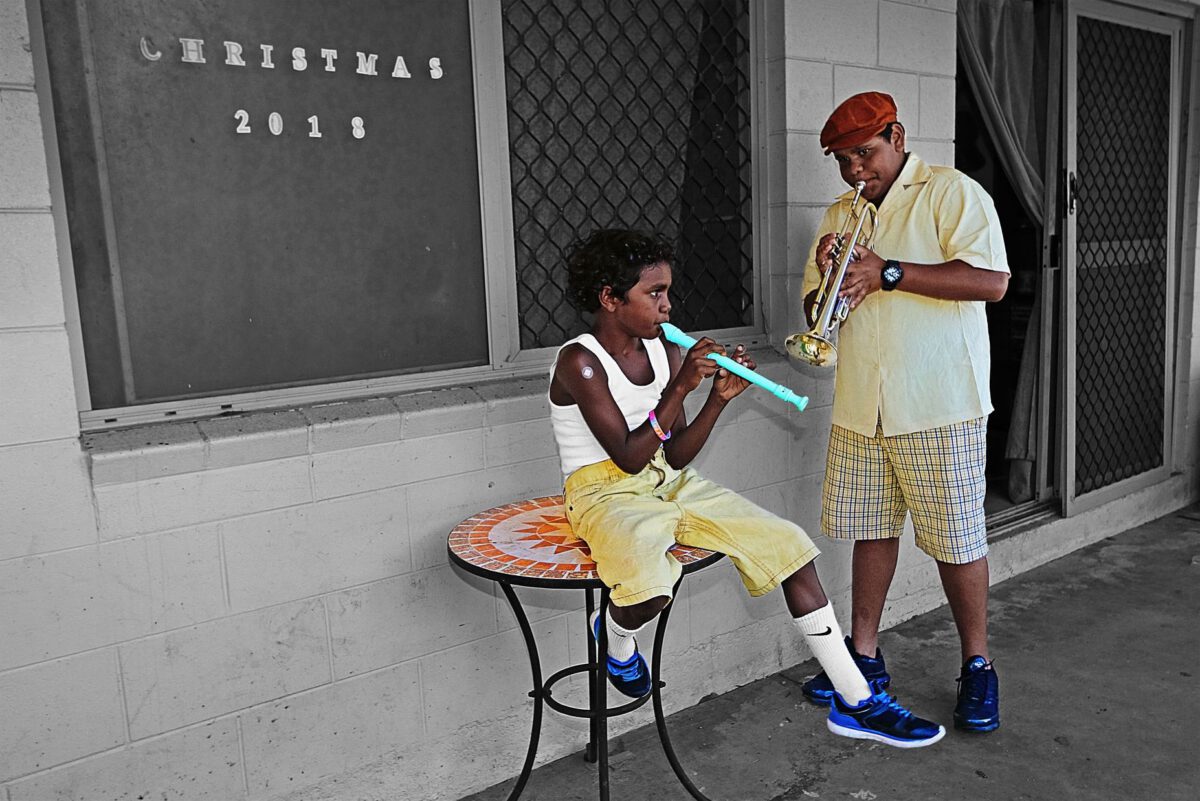
We like music, we in the school band.
We’re practicing and it keeps everybody
on our street feeling good.
Davis
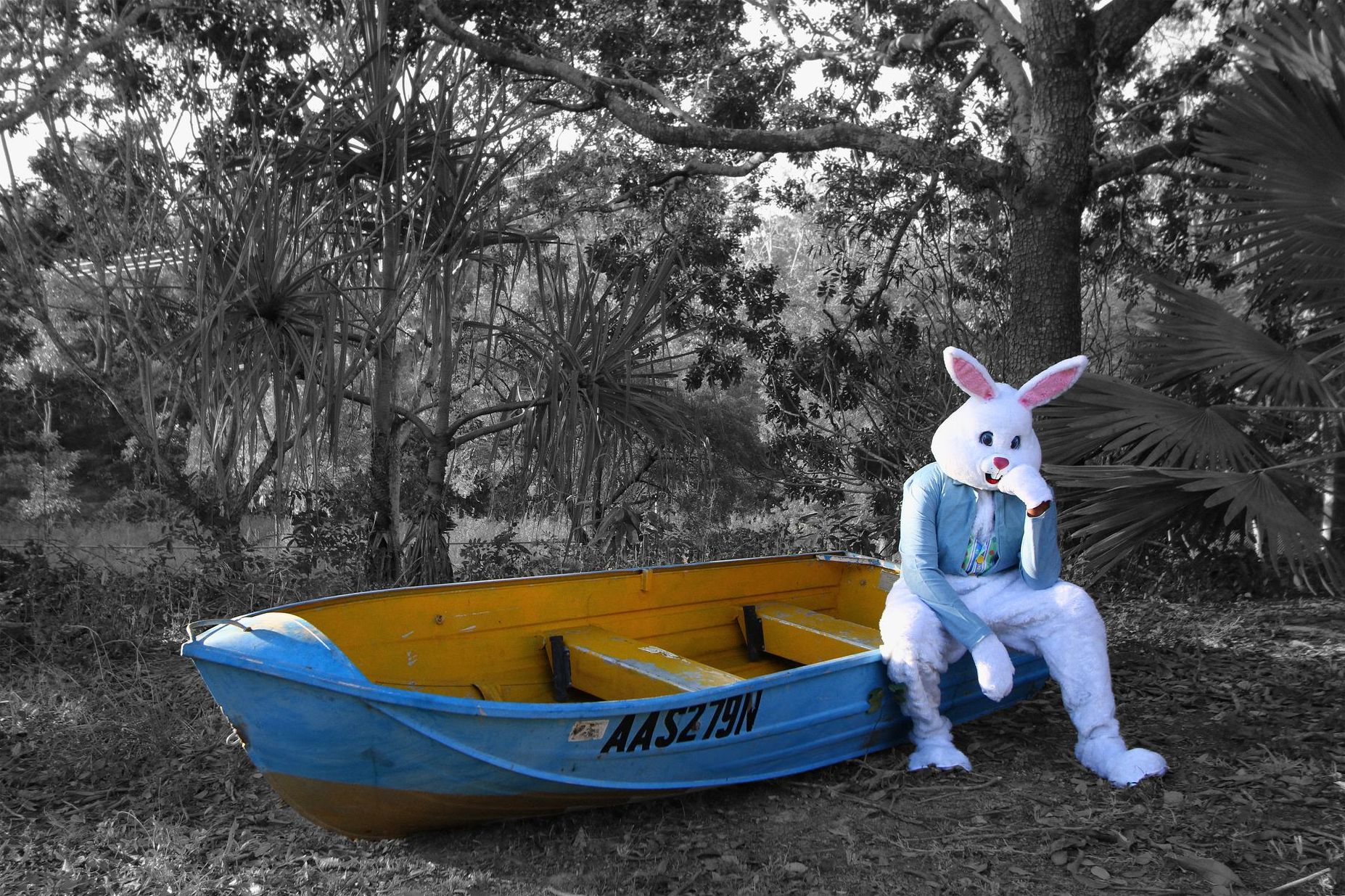
Easter was last week man...!
Dylan
You can see that this is us being present in time. Making a moment a memorable one. We like to have fun, we dress up and we celebrate a lifestyle up here in the bush. This is our young people, they bring a sense of humour and individuality to the community, this is what attracted me towards them, it’s that light.”
Naomi
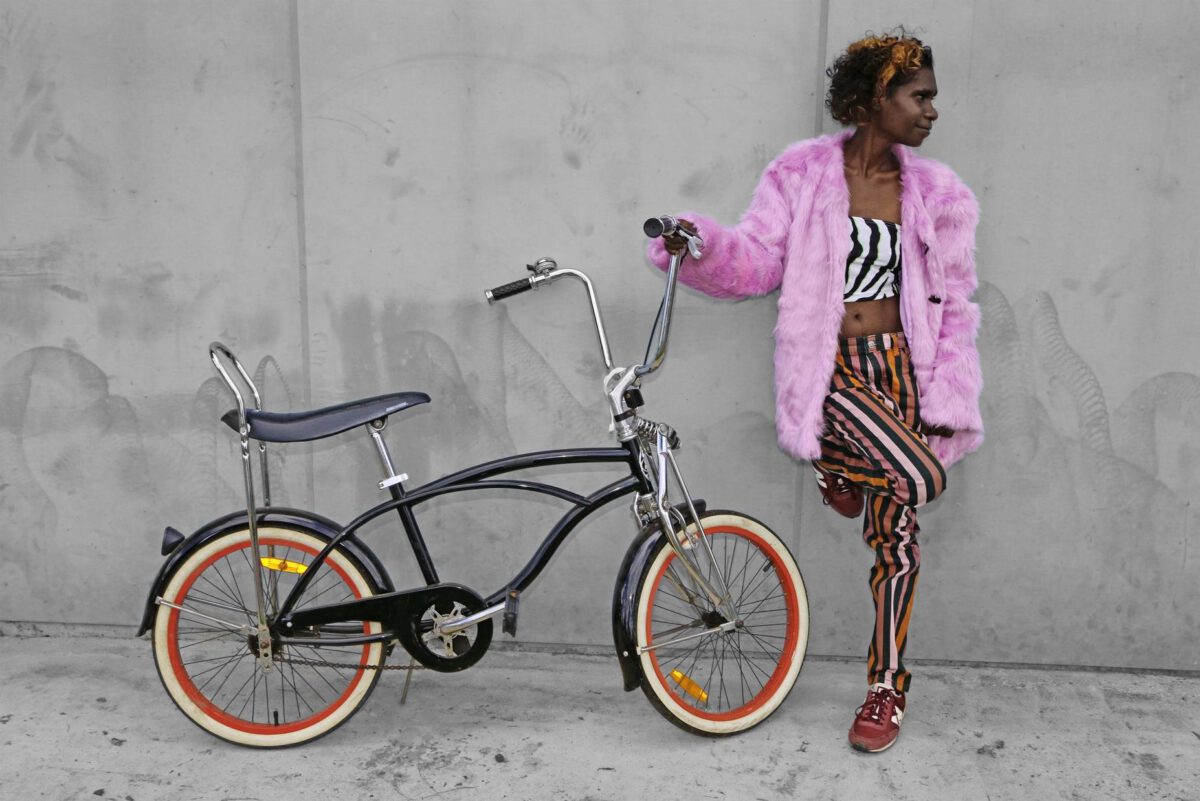
Ms. Daley, the kindergarten teacher
has a flash black bike, it’s them olden-style one.
Every time I drop Erica off at kindy,
I always check it out.
Kayla
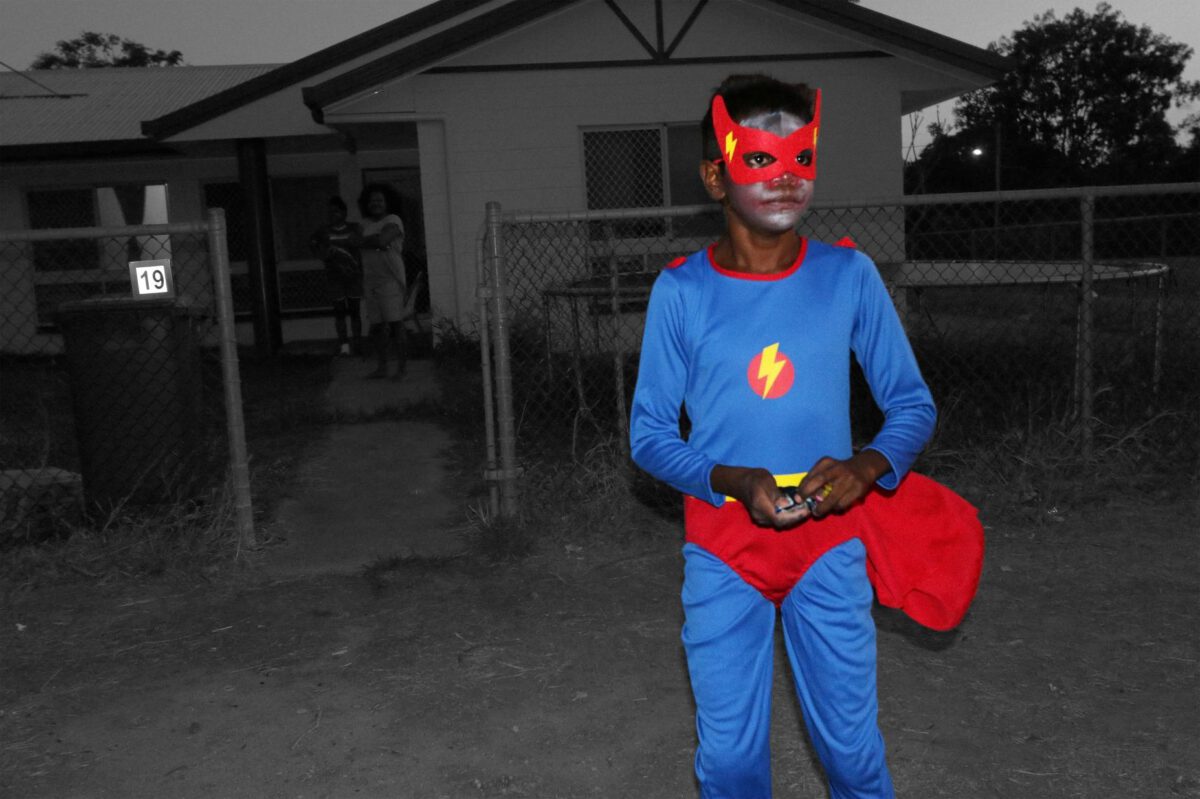
I’m waiting for Bernard
to come pick me up on his bike
we going trick or treating,
I got some lollies
but it’s not enough.
Gordon Jr
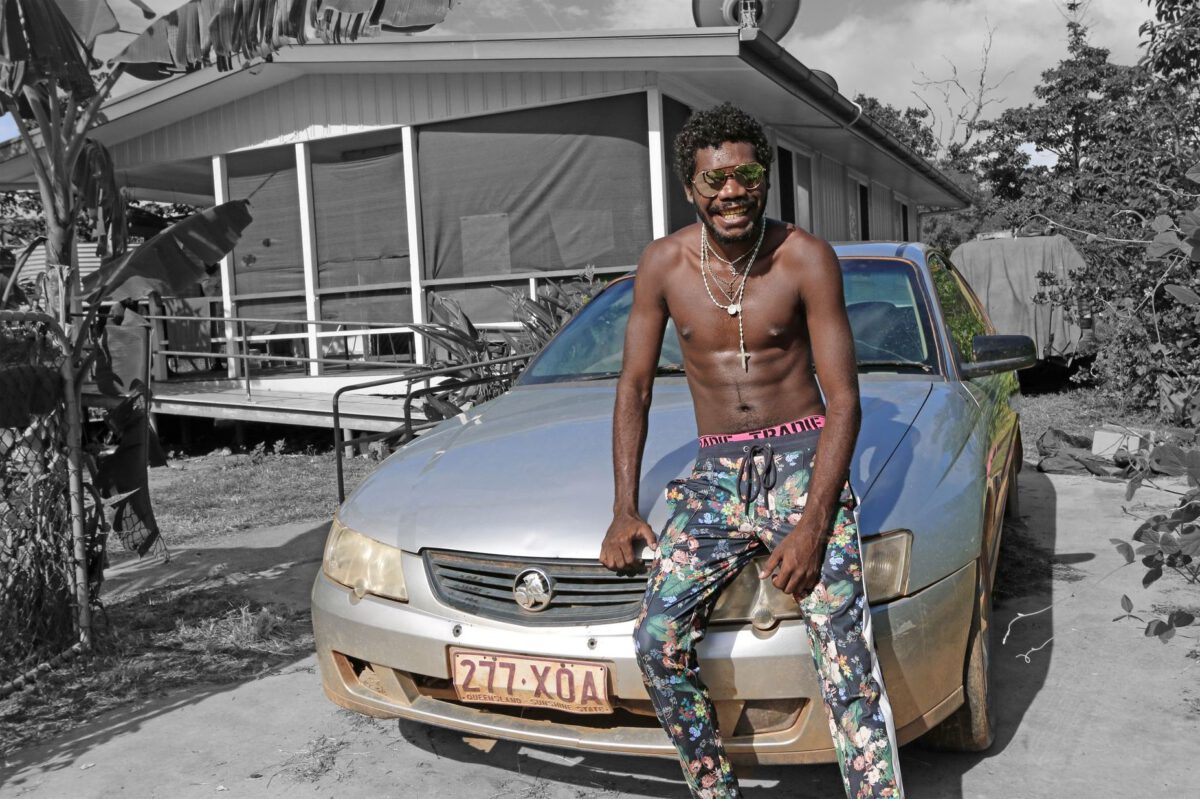
Choice buddy!
Where you want me to stand
here or there?
Sit here OK?
Puchaanu
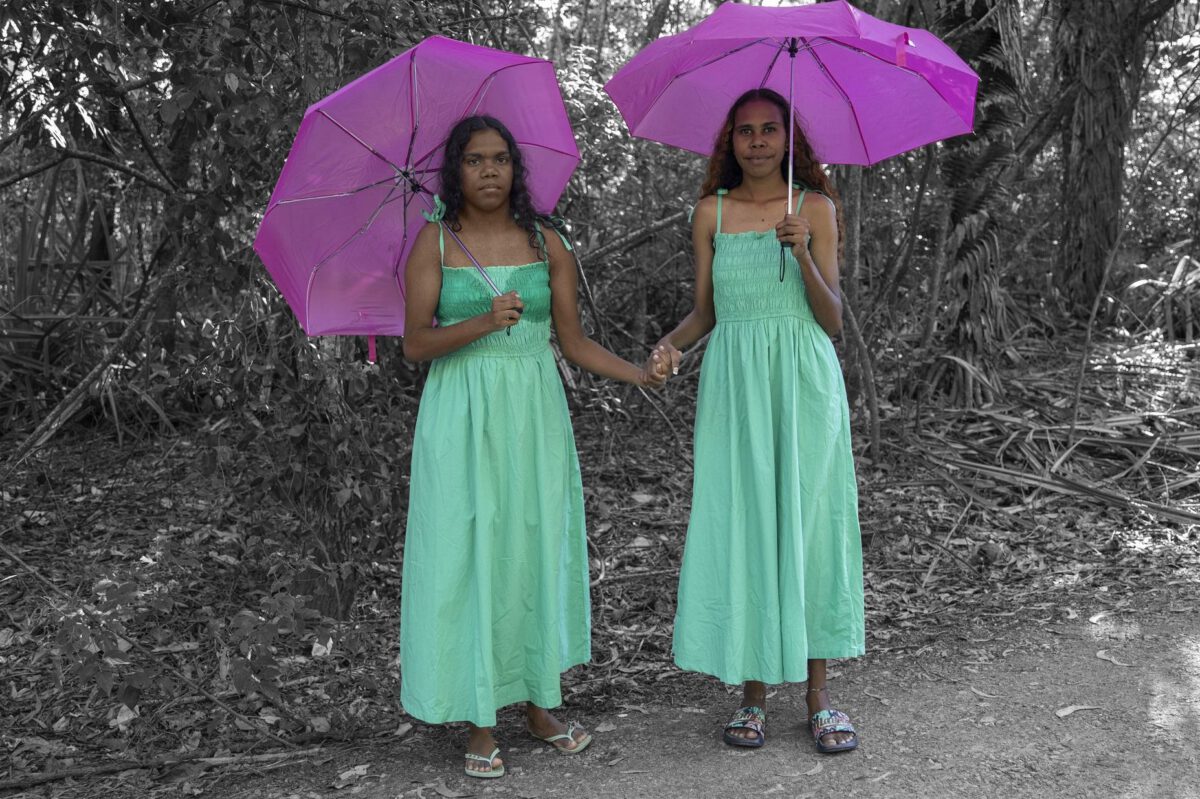
Rainy days, but our vibes stay sunny.
Cynthia
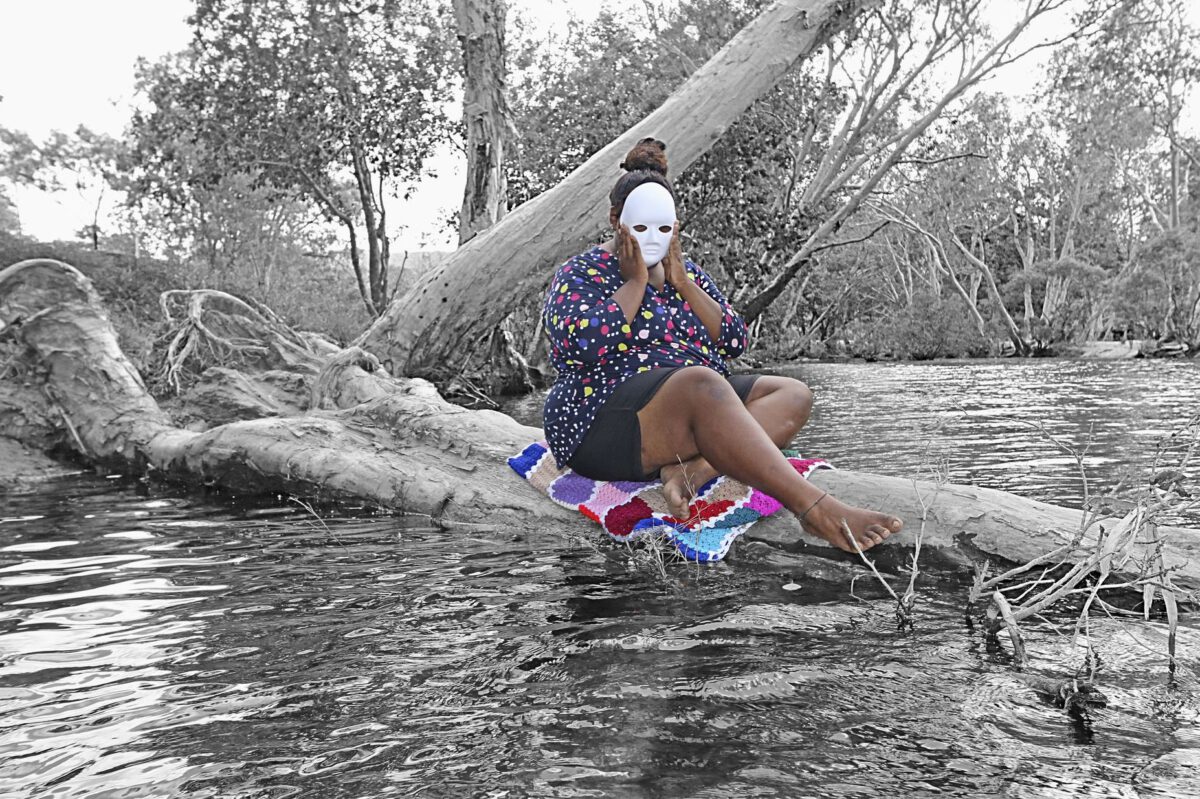
They don’t know I’m here.
I come here all the time,
it’s the best spot on the river
but you have to be really quiet
otherwise they will see you.
Katherine
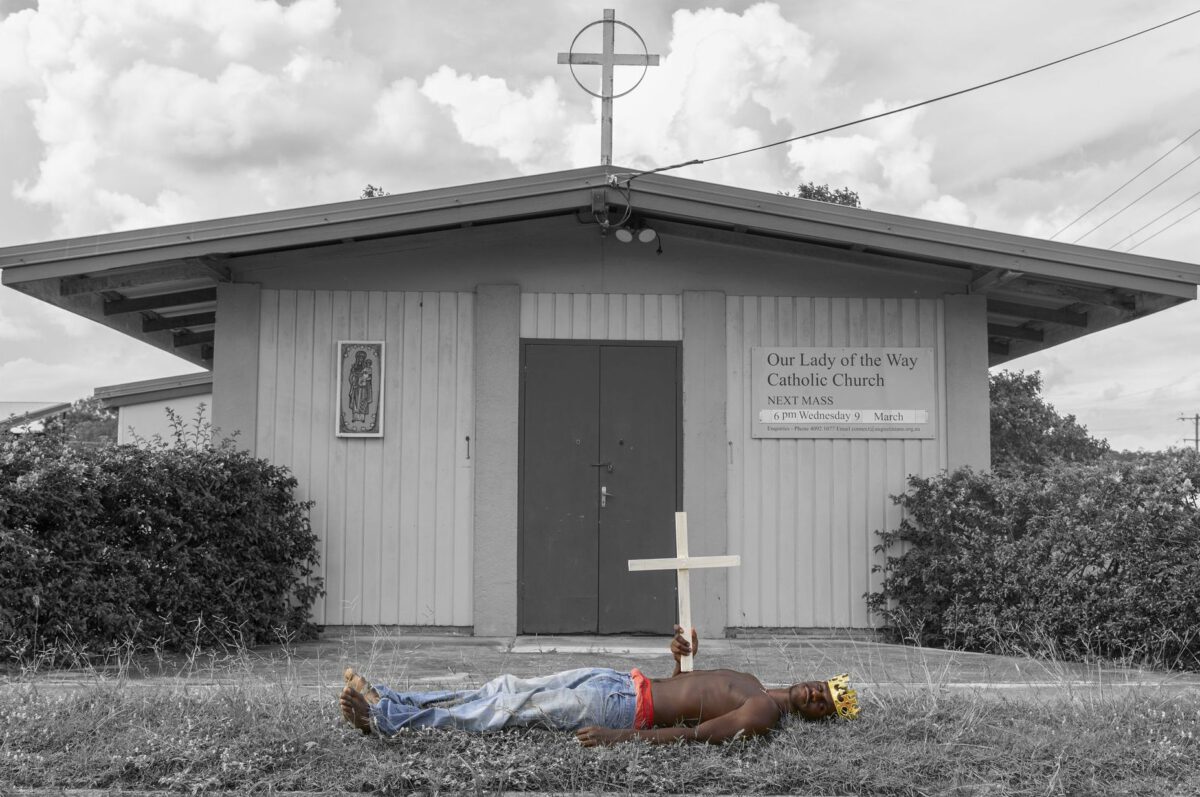
Feel a bit stuck at the moment.
A lot going on at home.
Harry
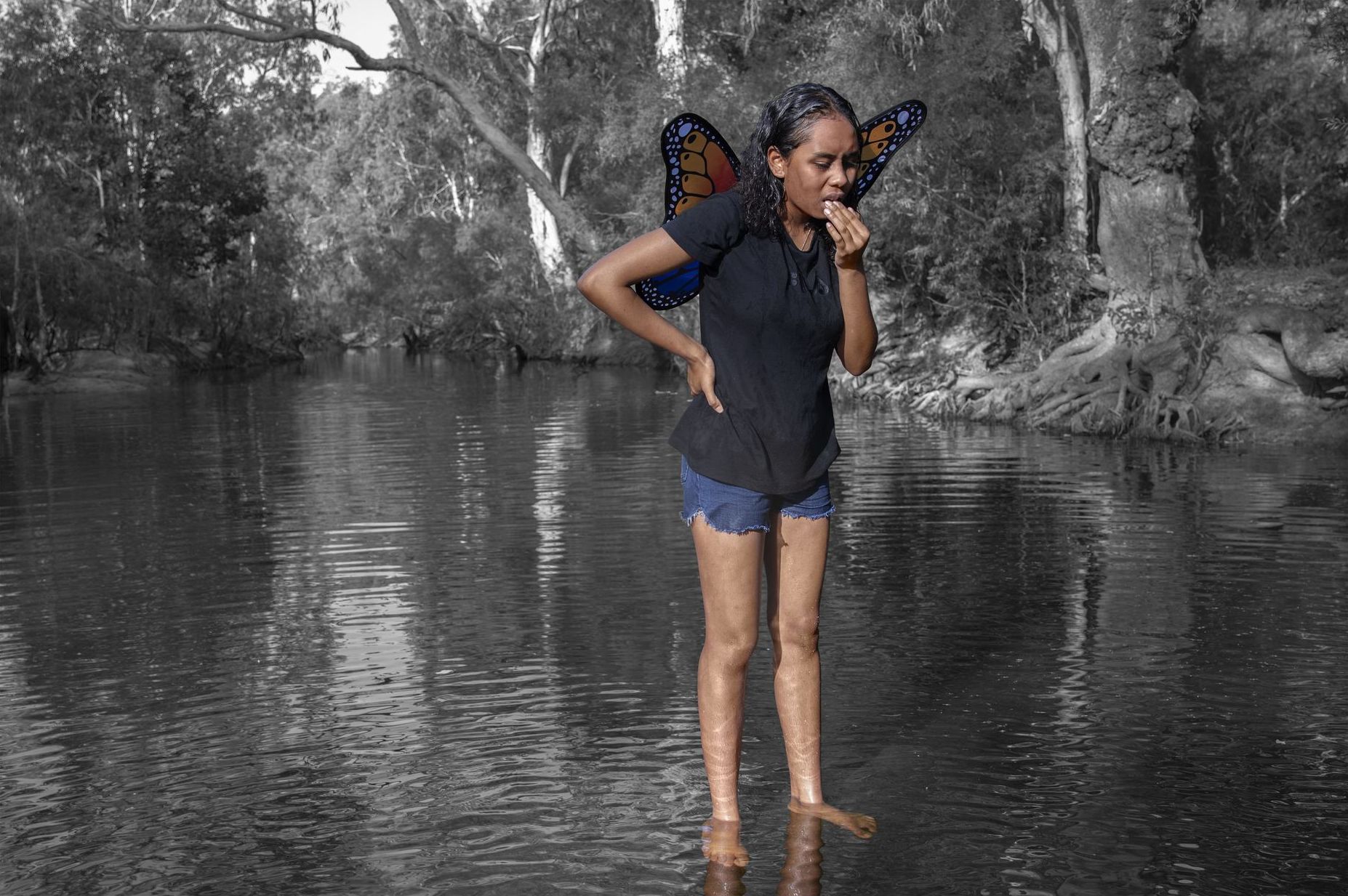
I like coming to the river,
it’s so peaceful here,
you can just be yourself
and have fun in nature.
El’leija
Being from the community and sharing life’s experiences with Cape York people, there is an intrinsic trust and oneness that exists in these photographs. While the camera is always present, it is also invisible — we just talk and capture the essence of the moment.”
Naomi
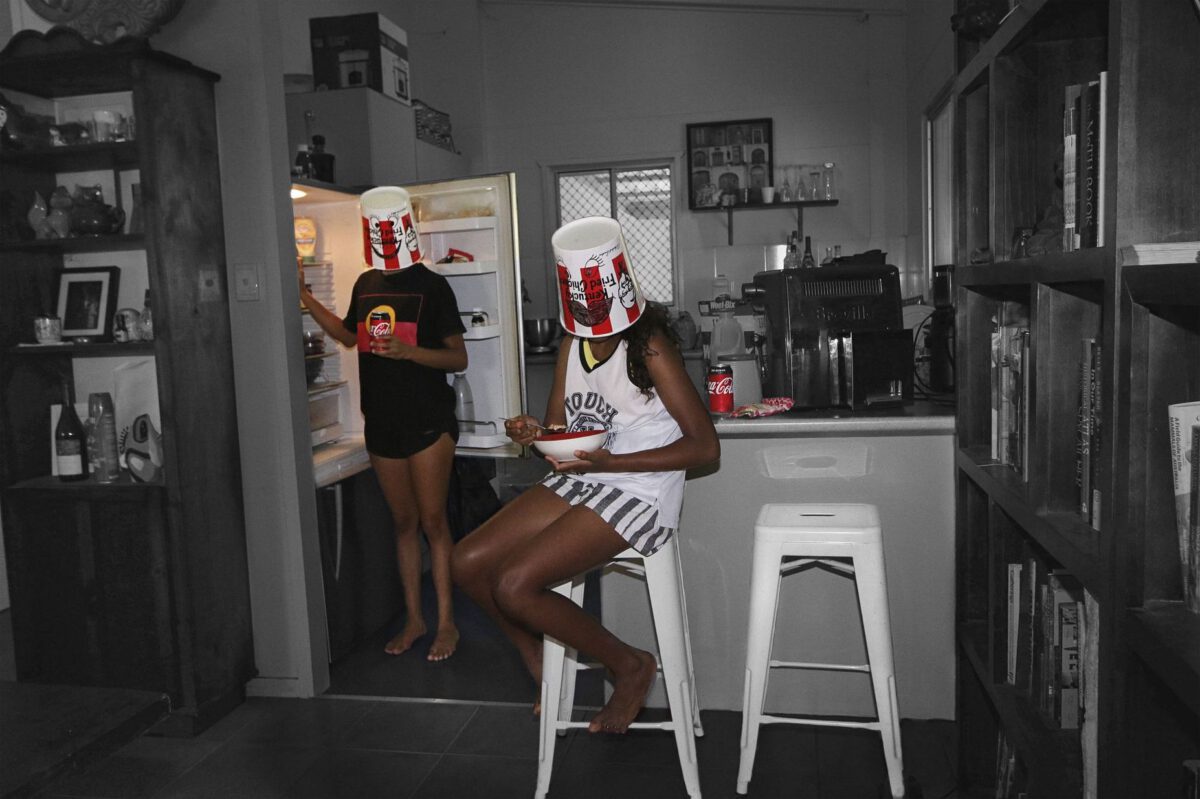
...too early for photos,
we haven’t done our hair first!
Leija
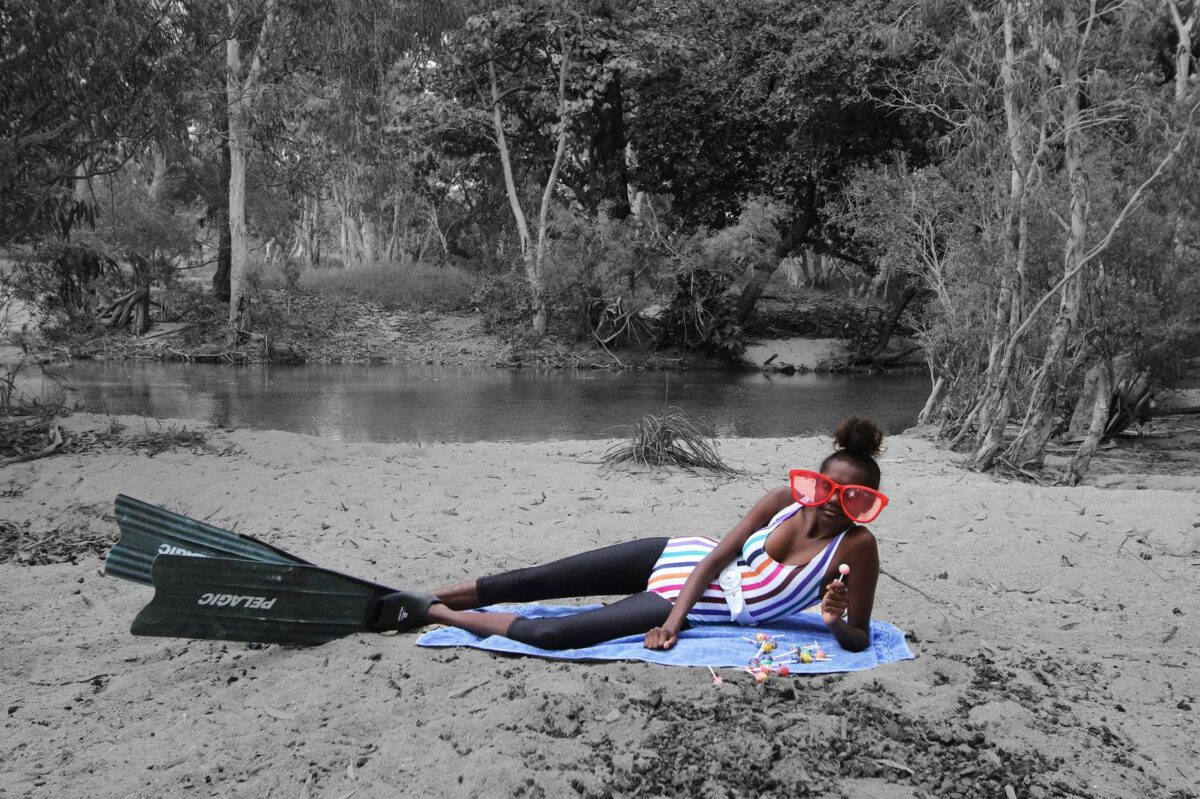
I’m here with my Mum, she over there fishing.
I don’t feel like fishing.
I just wanted to come down the river
to play fun.
Verona
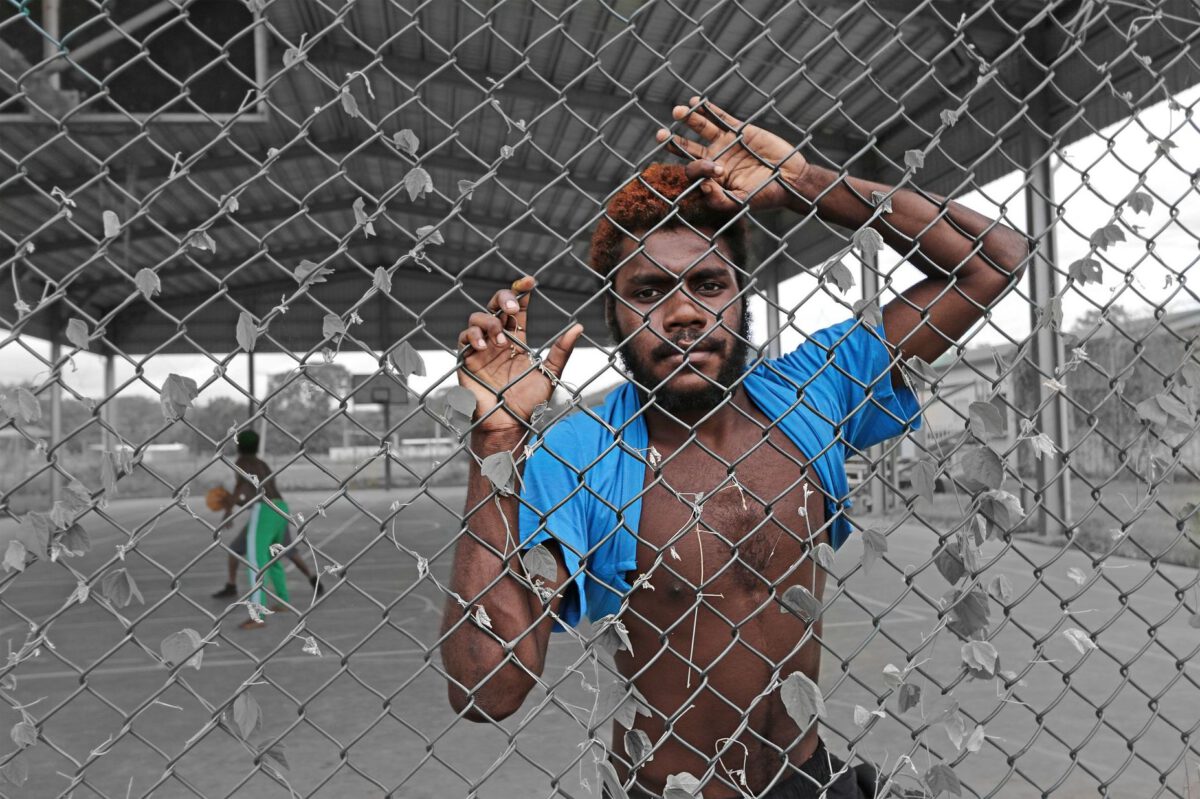
I should try and climb this,
see how far I can get;
I feel like a bird in a cage.
Mark
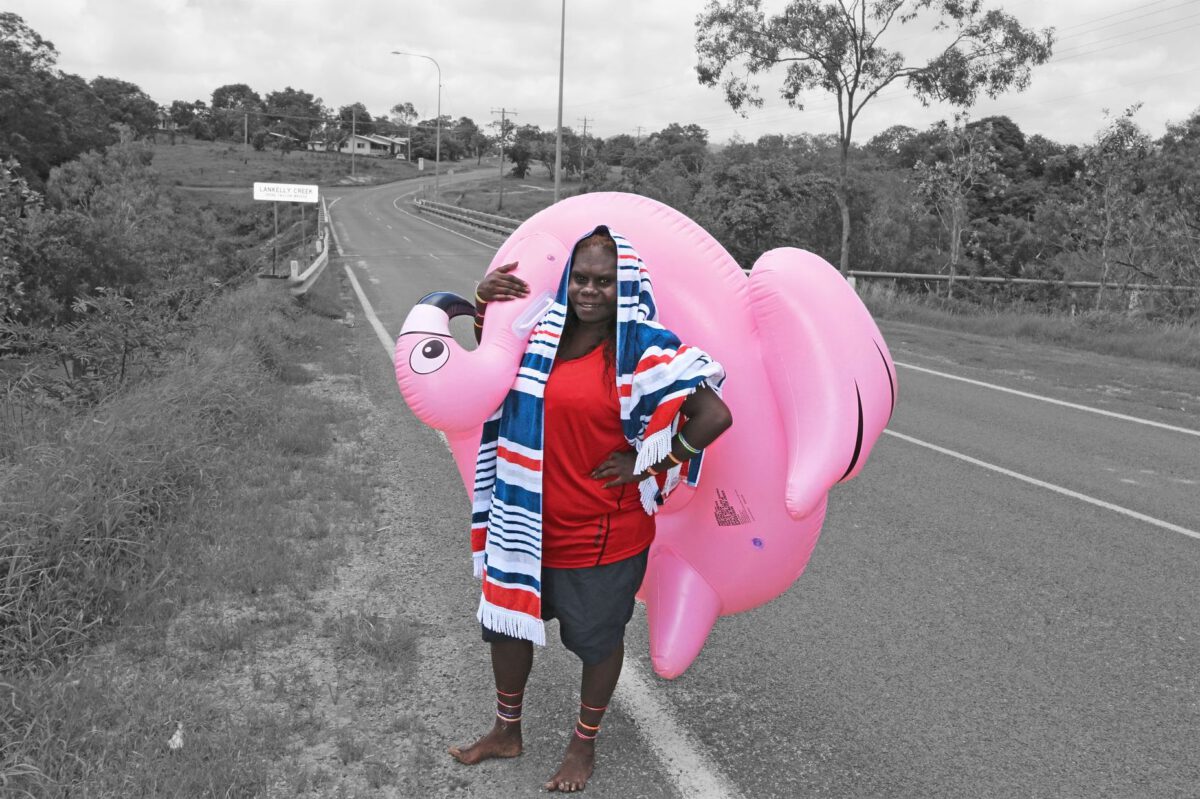
It’s so hot,
can’t wait to get there
and just chill.
Melita
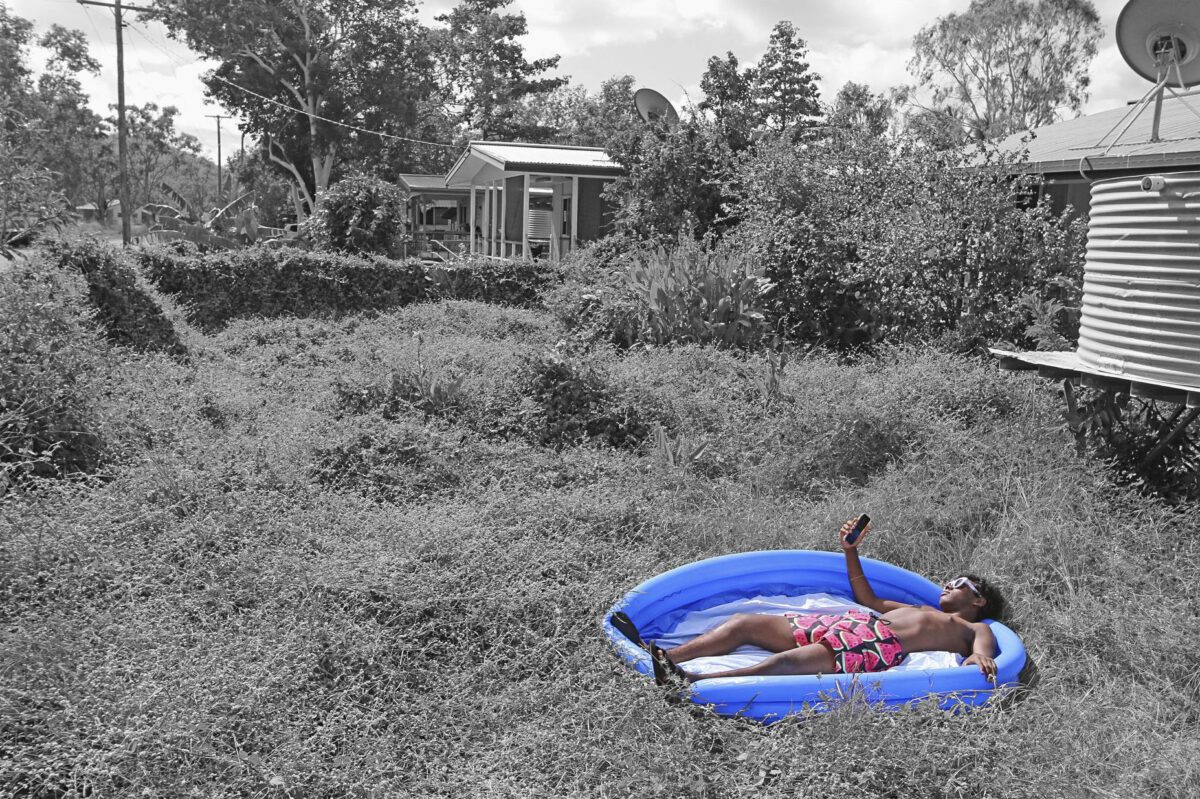
I’m just chillin and hiding from Mum.
She asked me to cut the grass
but I don’t feel like cutting the grass right now
so I came next door.
Chastyn
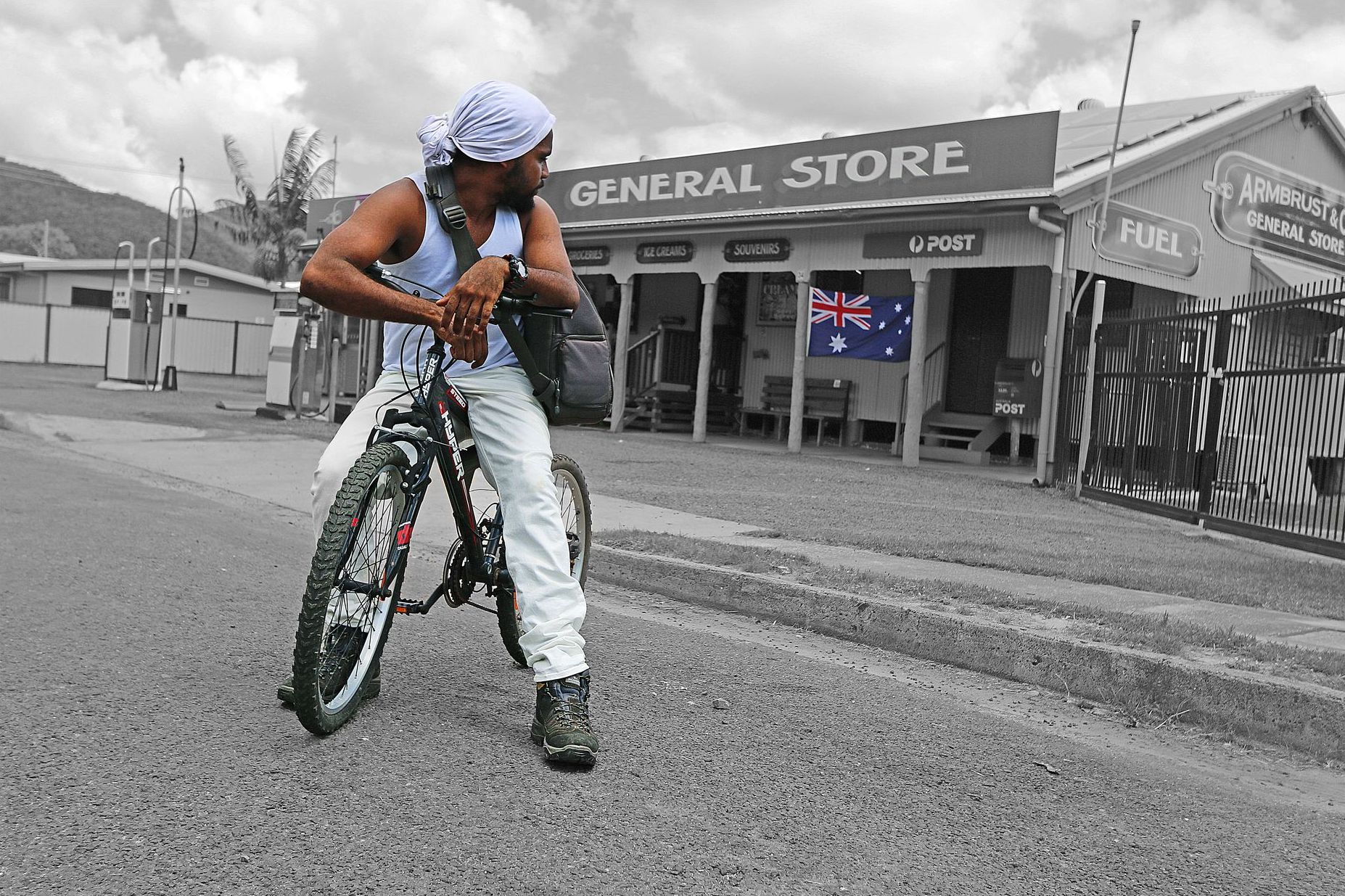
I’m banned from that store for a week...
I don’t care!
I’ll just keep riding past to the next shop.
Amos Jnr
I am continually astonished that Australia doesn’t scream from the hilltops, every day, about living in a country with the oldest living culture on the planet. Why is it not celebrated by every person every day; not as a point of activism, but to be proud. I feel my journey is important, because it may play a tiny little role in bringing the beauty and expertise of Indigenous people to light.”
Naomi
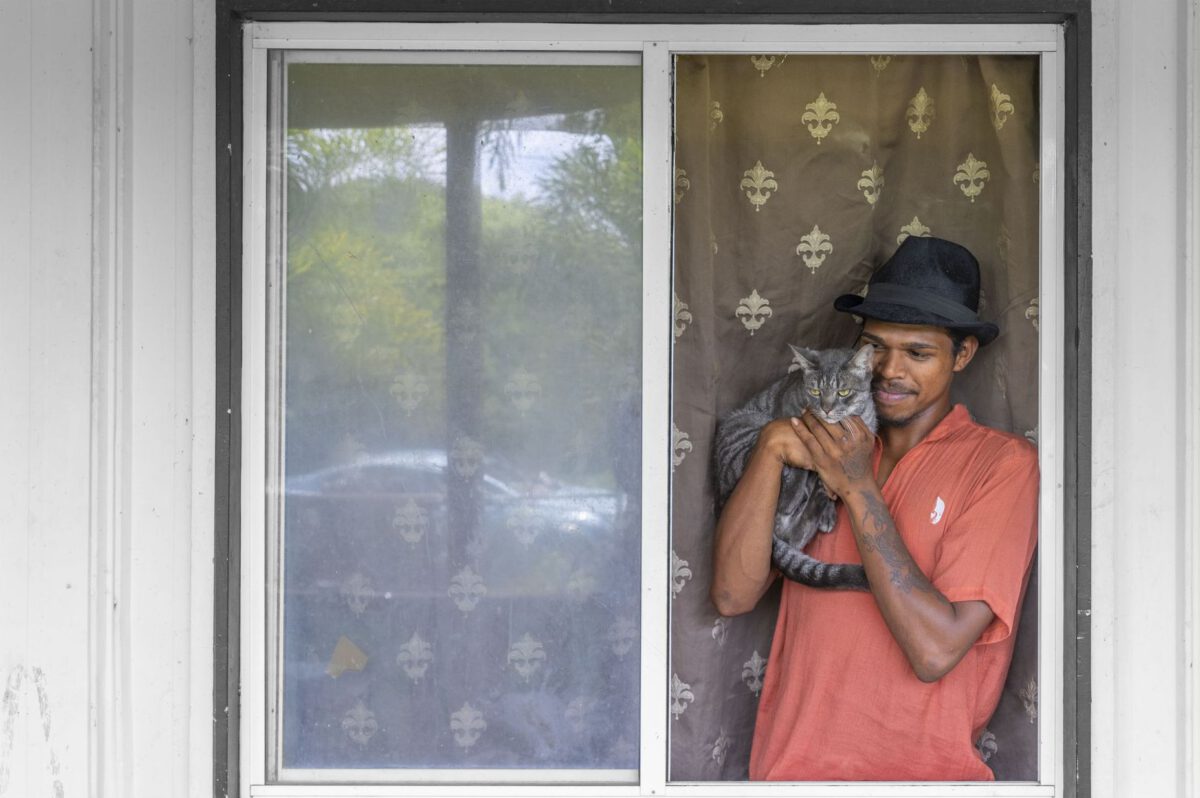
This is my niece’s cat,
his name is Grey.
CJ
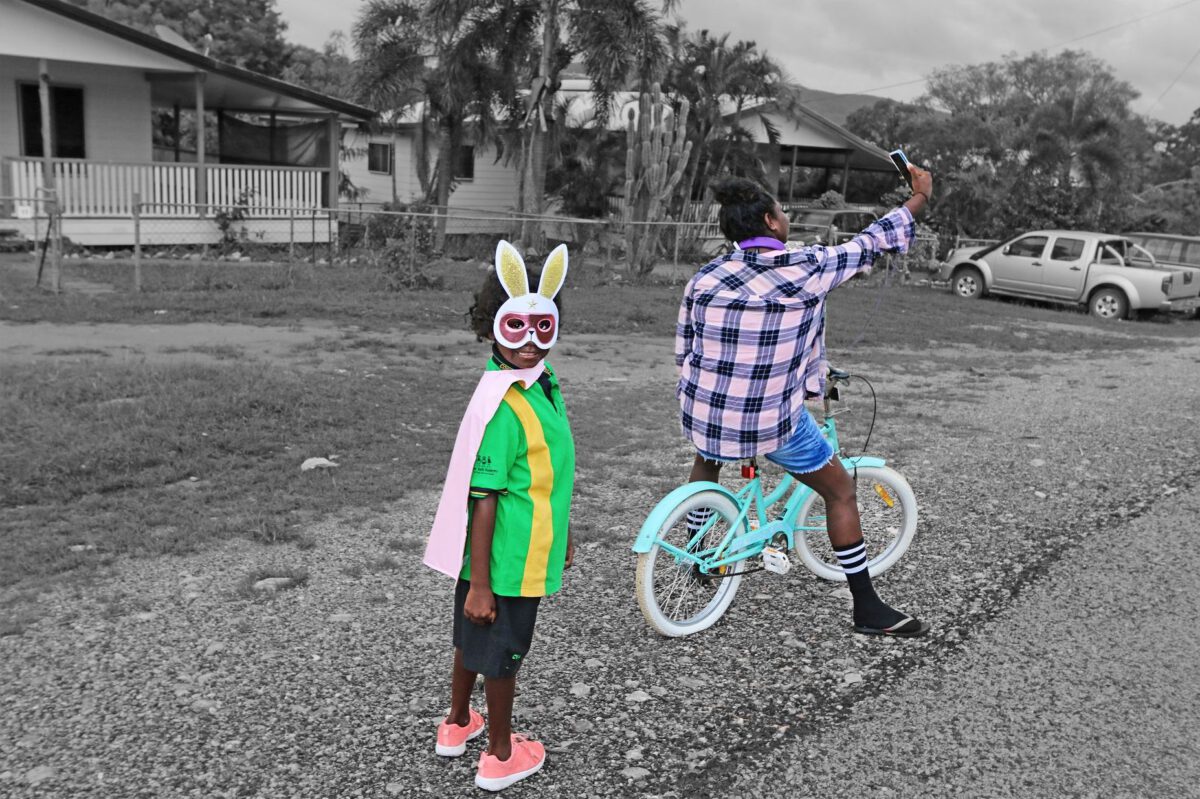
She told Mum she was taking me
for a ride down the road
but she not.
Laine
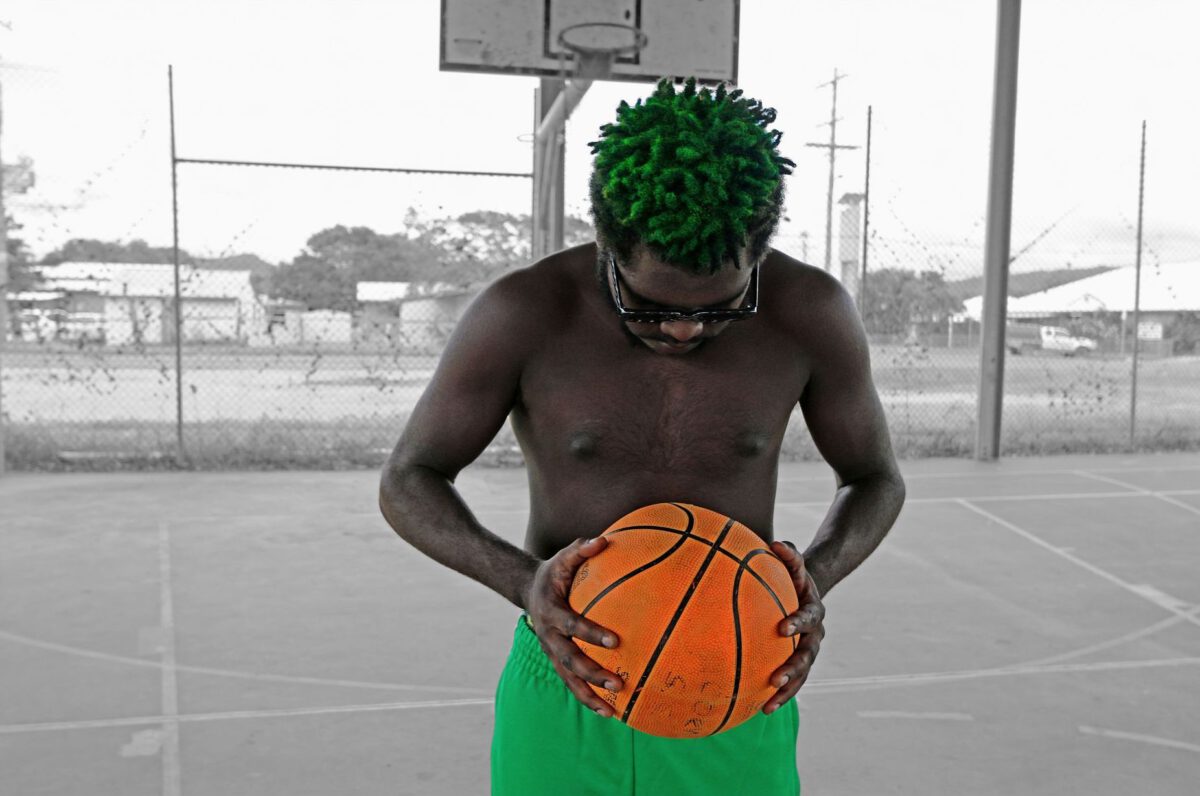
This one’s ripped but e’right, e’goes.
Baziem
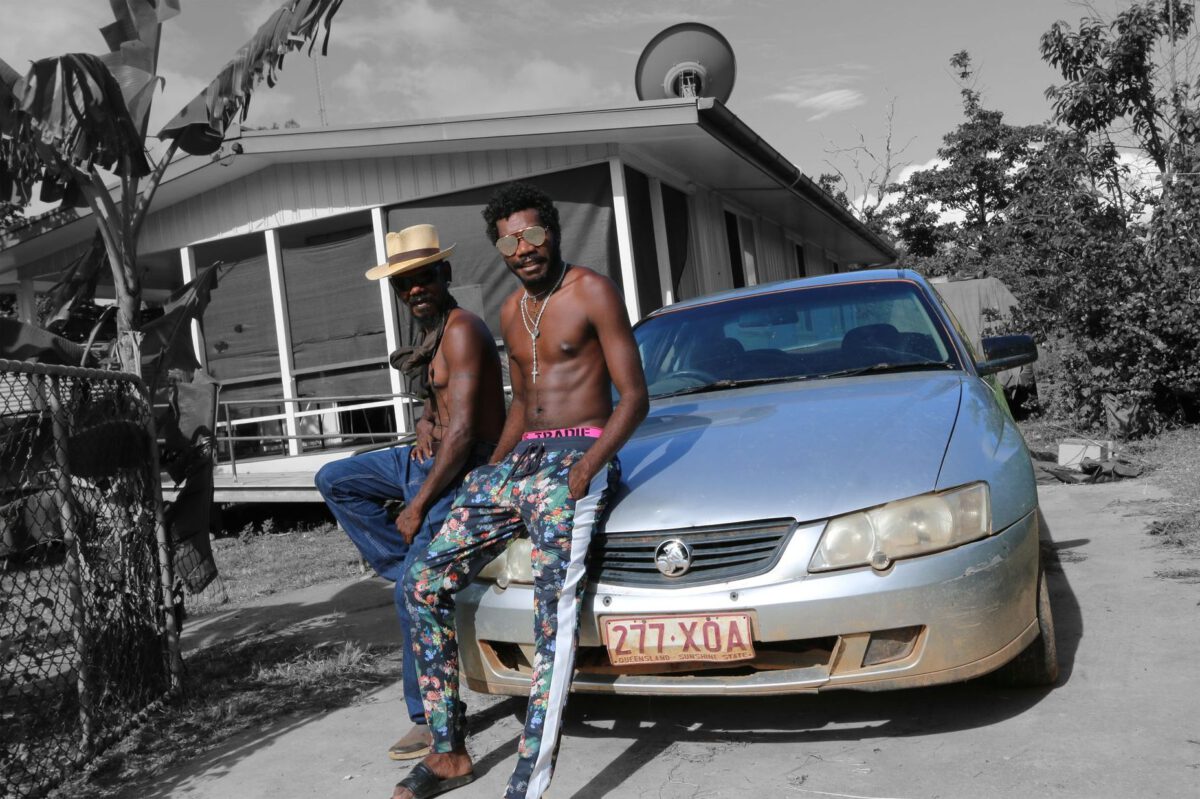
What time there Joe?
Can’t take too long...
have to go shop soon
before it closes at four,
pick my supply up for the weekend.
Jimmy
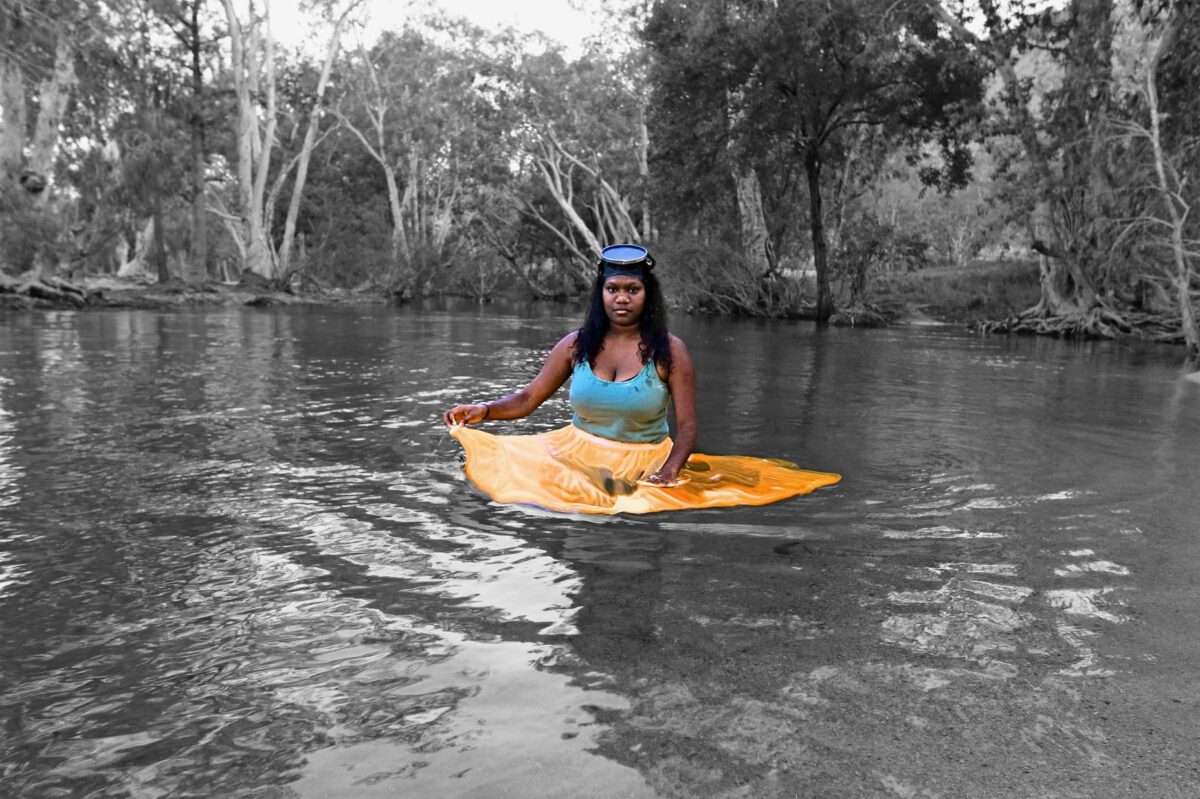
I love this! Think I’ll wear it
to Puchaanu’s birthday party
coming up soon.
Donna
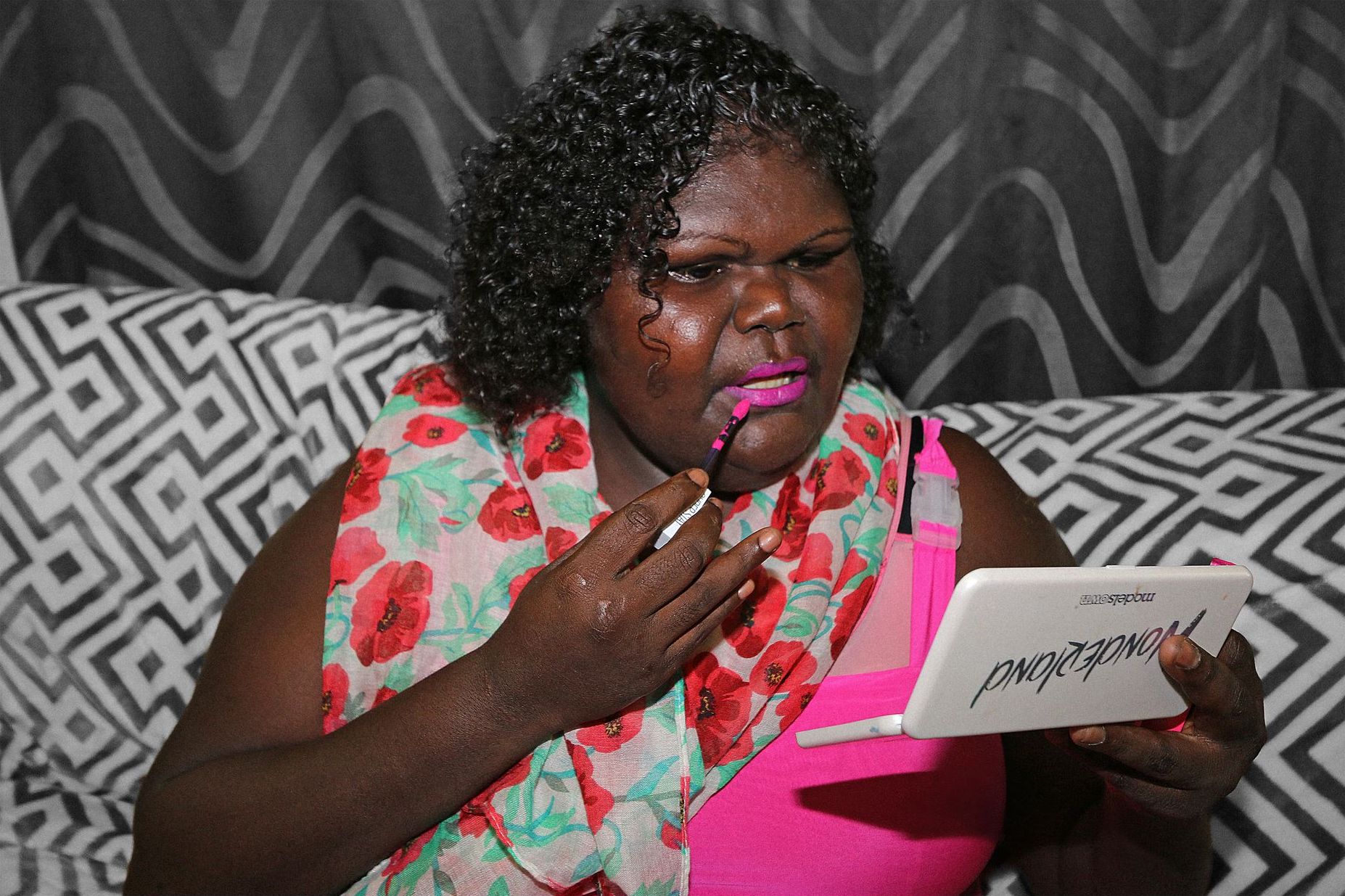
I love pink everything,
see this,
my new makeup stuff came yesterday,
I’m still deciding
which pink colour looks better...
what about this colour?
Breanna
I wanted to focus on young people hence the name ‘Adolescent’ and what I was perceiving was this group of young people having fun exploring their identity through a positive and creative way. That’s when the word ‘Wonderland’ came to me, their settings being in the bush and growing up in this vast landscape you can’t help but to wonder what’s out there and go looking for it.”
Naomi
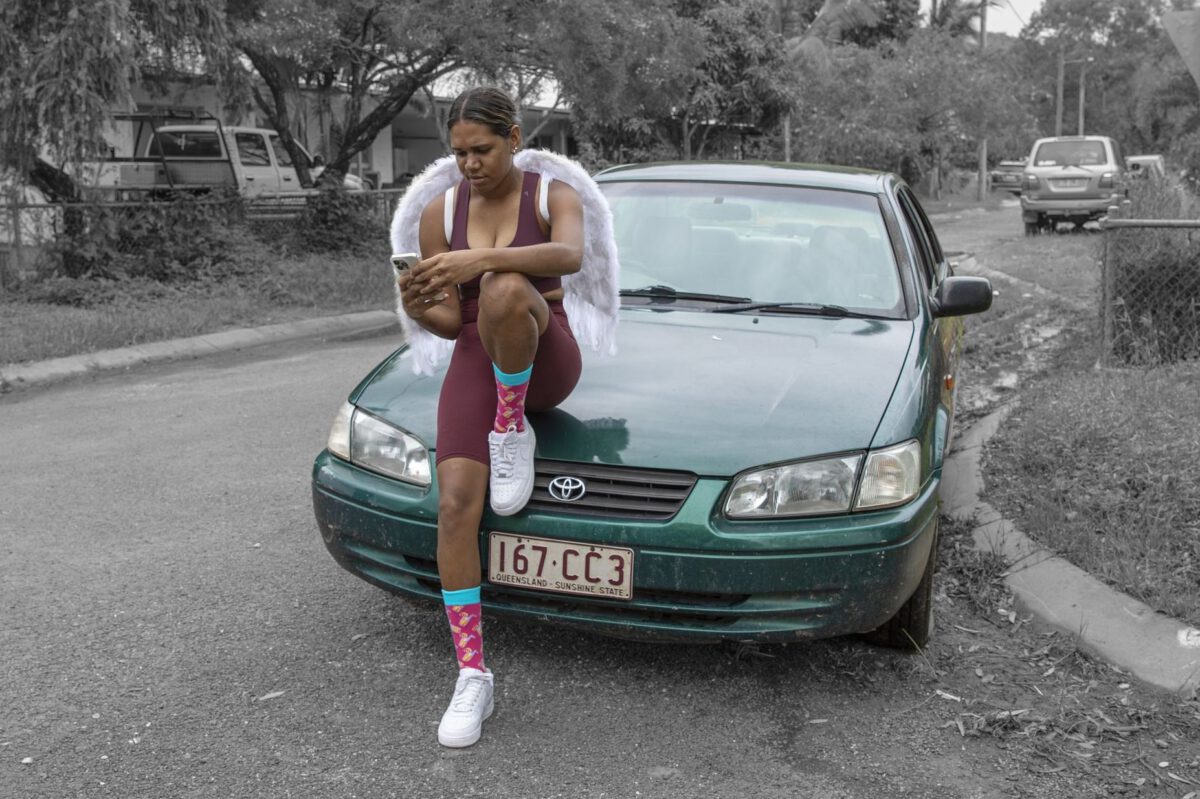
I’m waiting for Donna
to come pick me up.
We heading over Otherside
for disco.
Laina
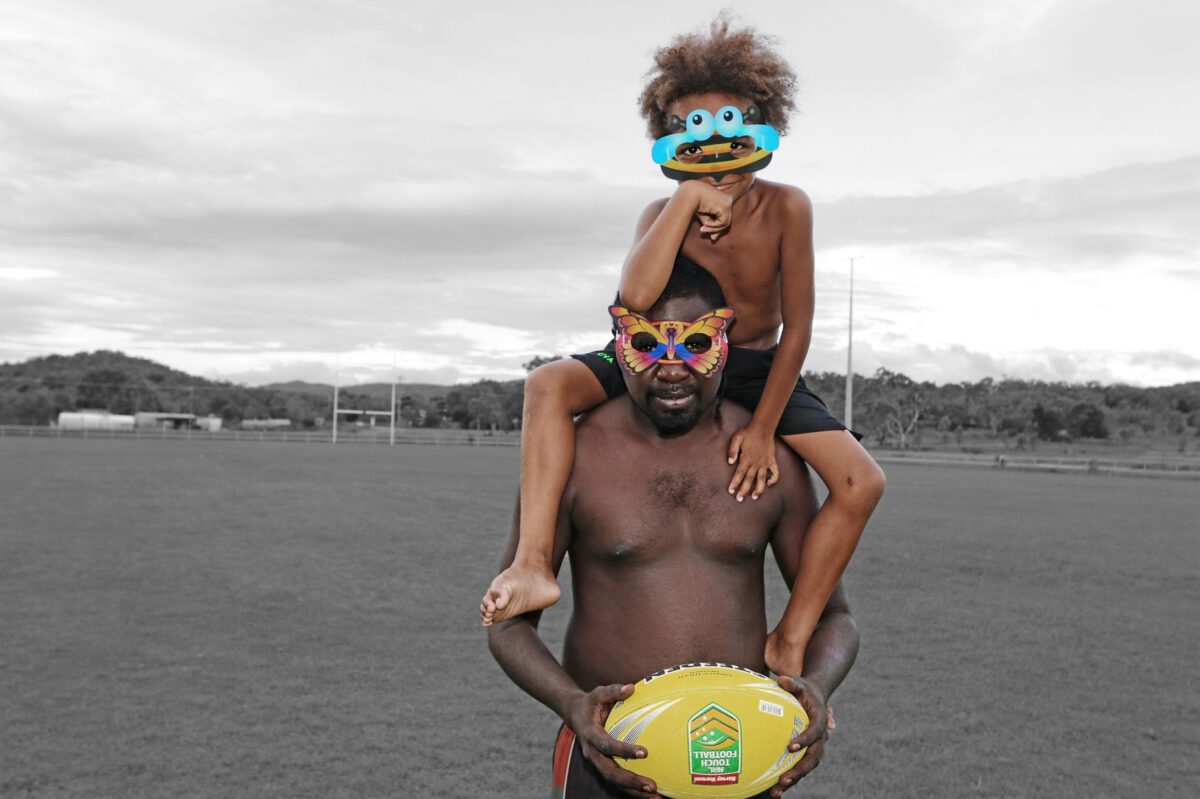
He wanted us to
play fly to the footy field
so we did.
Jahmanin
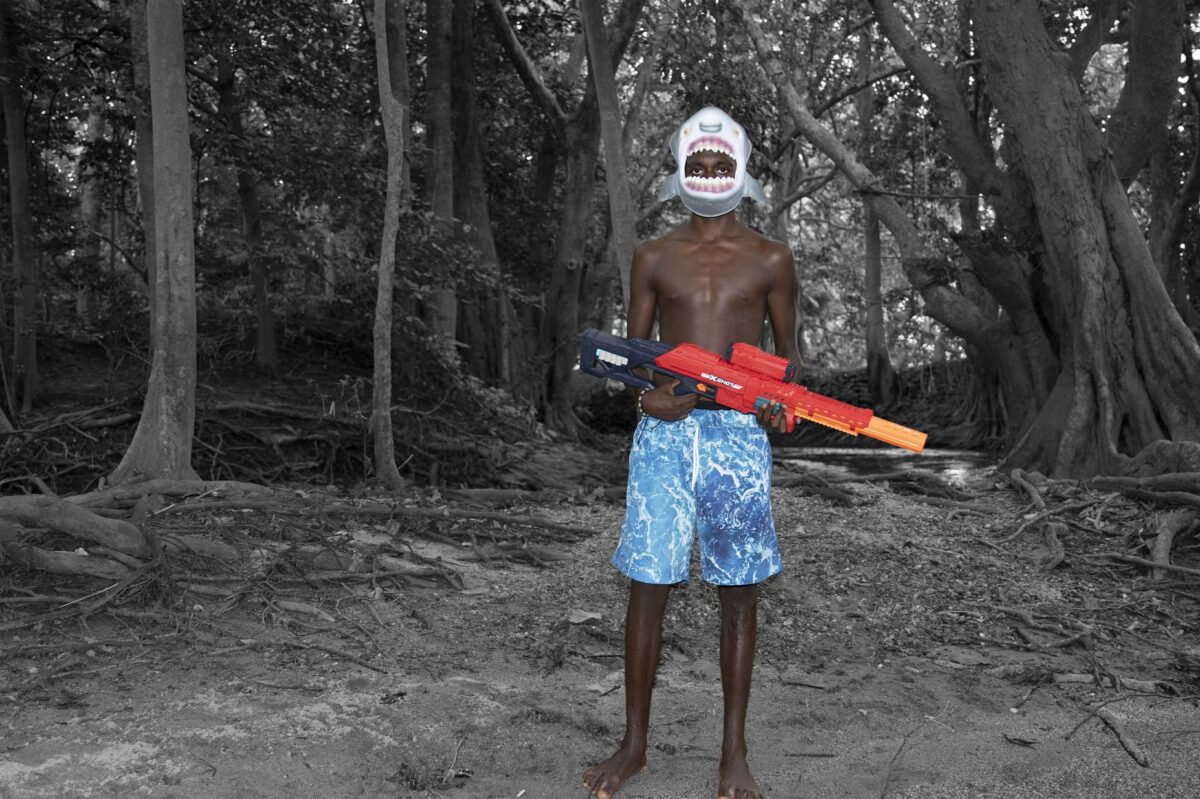
Life is an adventure,
make waves like a shark.
Julius
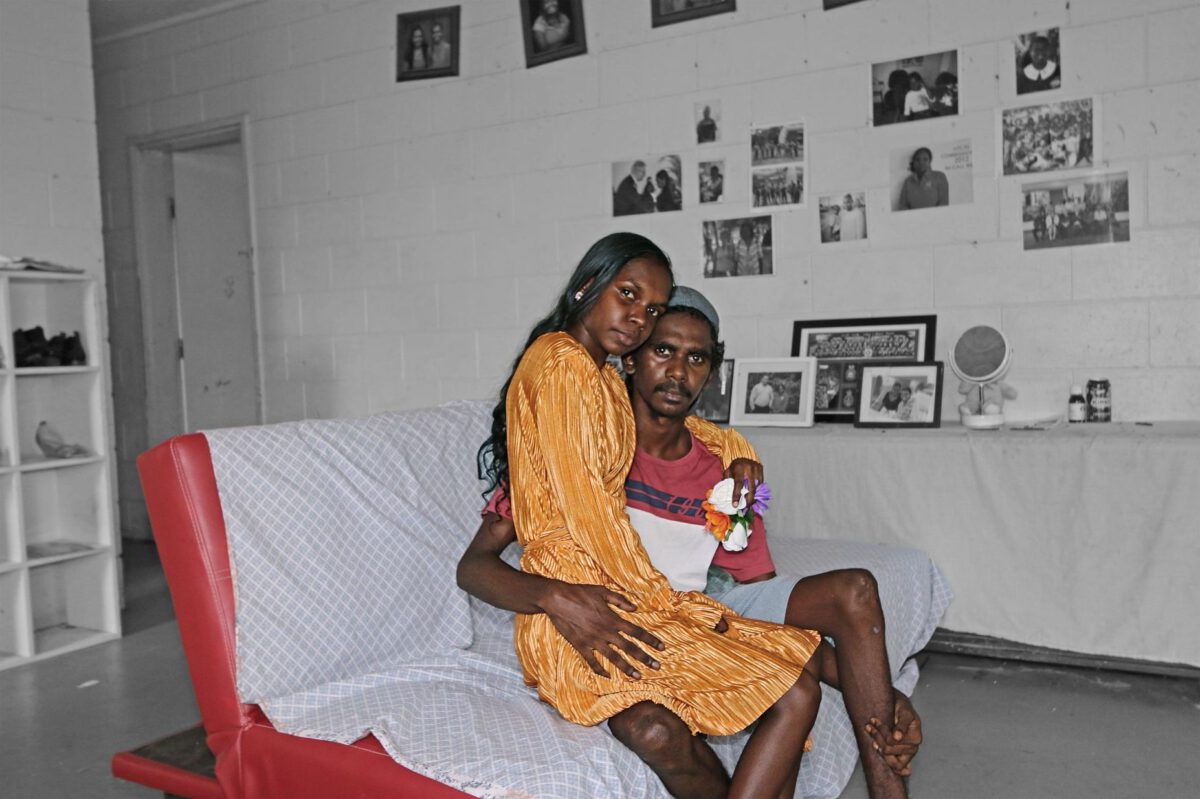
We been going out for nearly 12 months now.
Kurtis is from Pormpaaraw.
You know them Shortjoe mob?
Well that’s his mob.
Ratarni
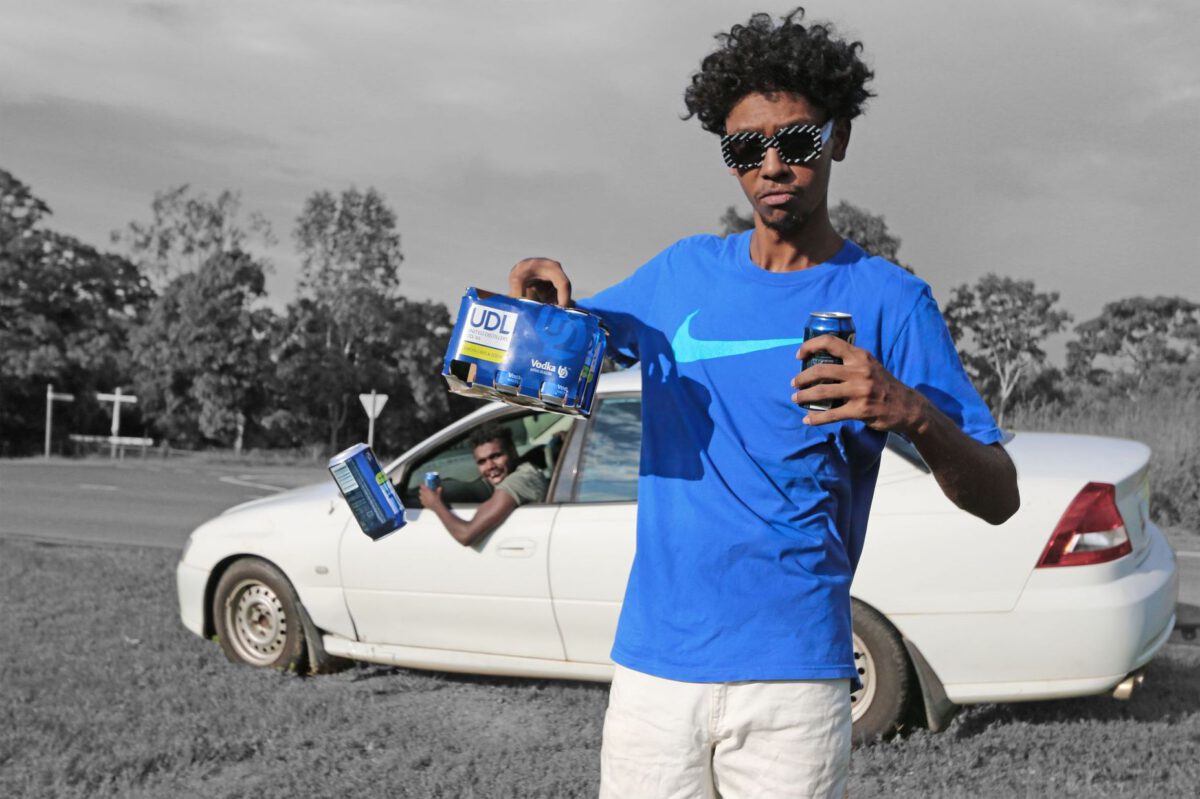
Yea take the photo I’m all good...
wait, can you get my drinks in it too please?
And how my hair look?
Should I put my cap back on or not?
Maybe not.
Trey
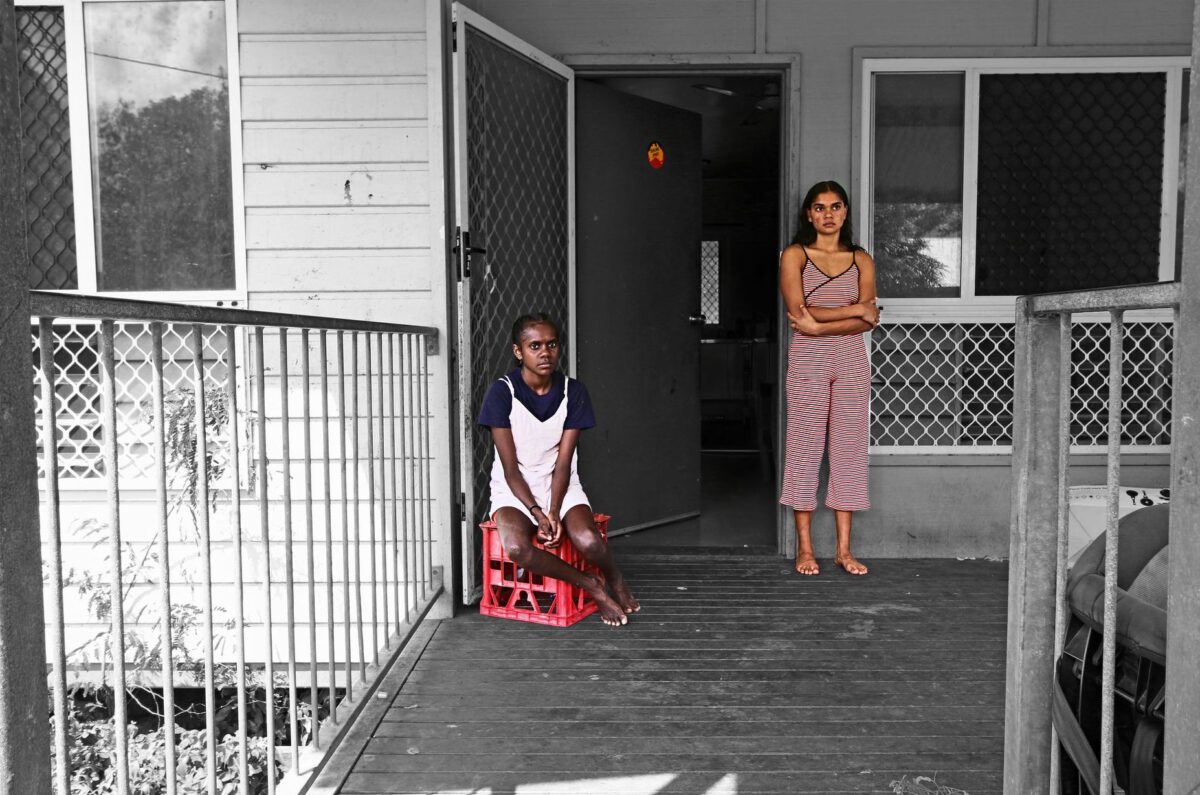
We still waiting and still nothing.
Madena
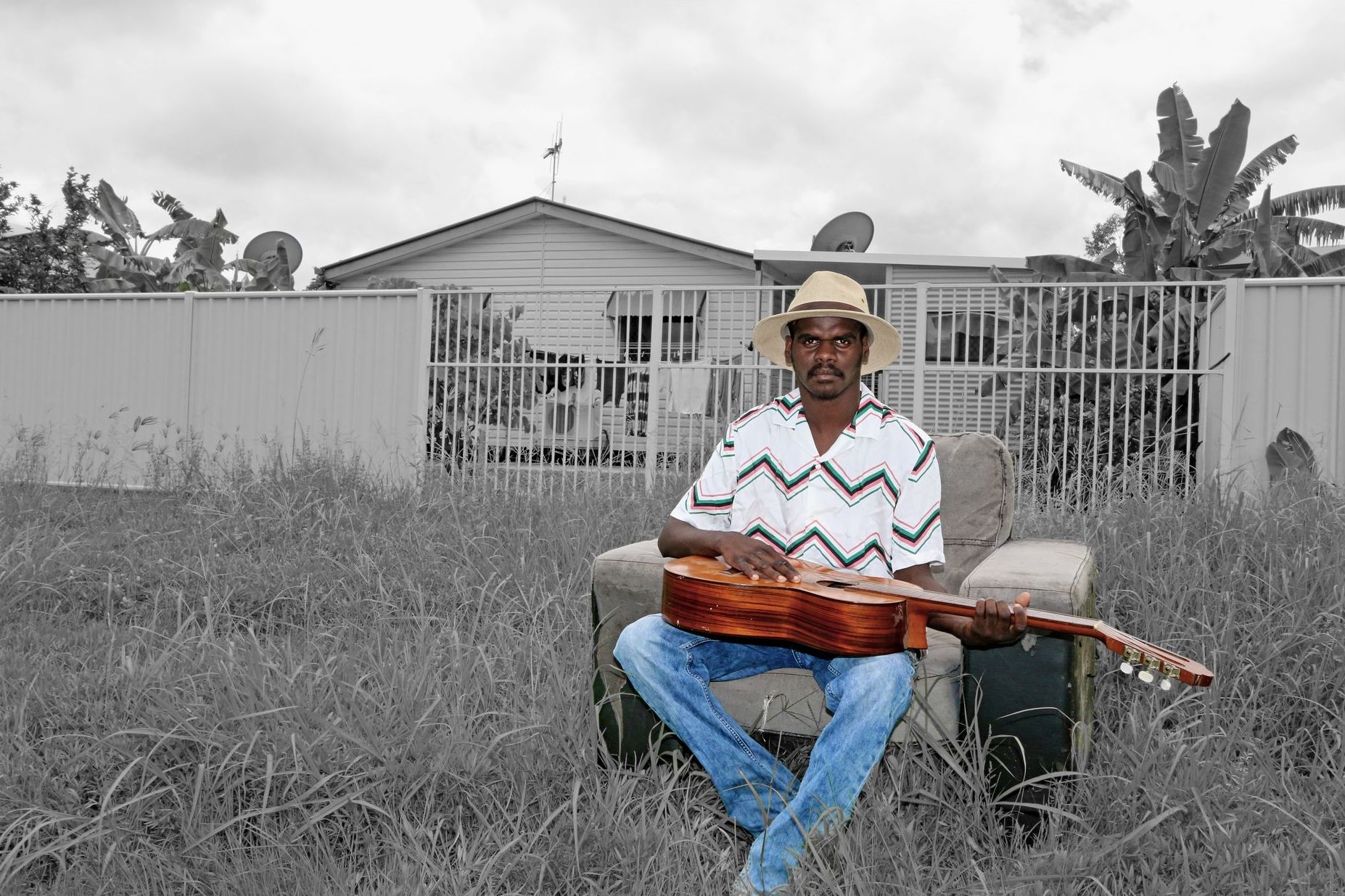
I just come from bottom-end street.
I left my guitar there
last night at Dwayne’s party.
I got it now so
I’m on my way back home.
Lee
I spent my life living and travelling on my traditional country with my grandparents ... I got to learn my connections to the land and sea from my Mother Kaantju side and my Father Umpila side. Learning from them ... was the best education anyone could possibly have ... my work is inspired by my heritage, my culture and my love for nature and my people.”
Naomi
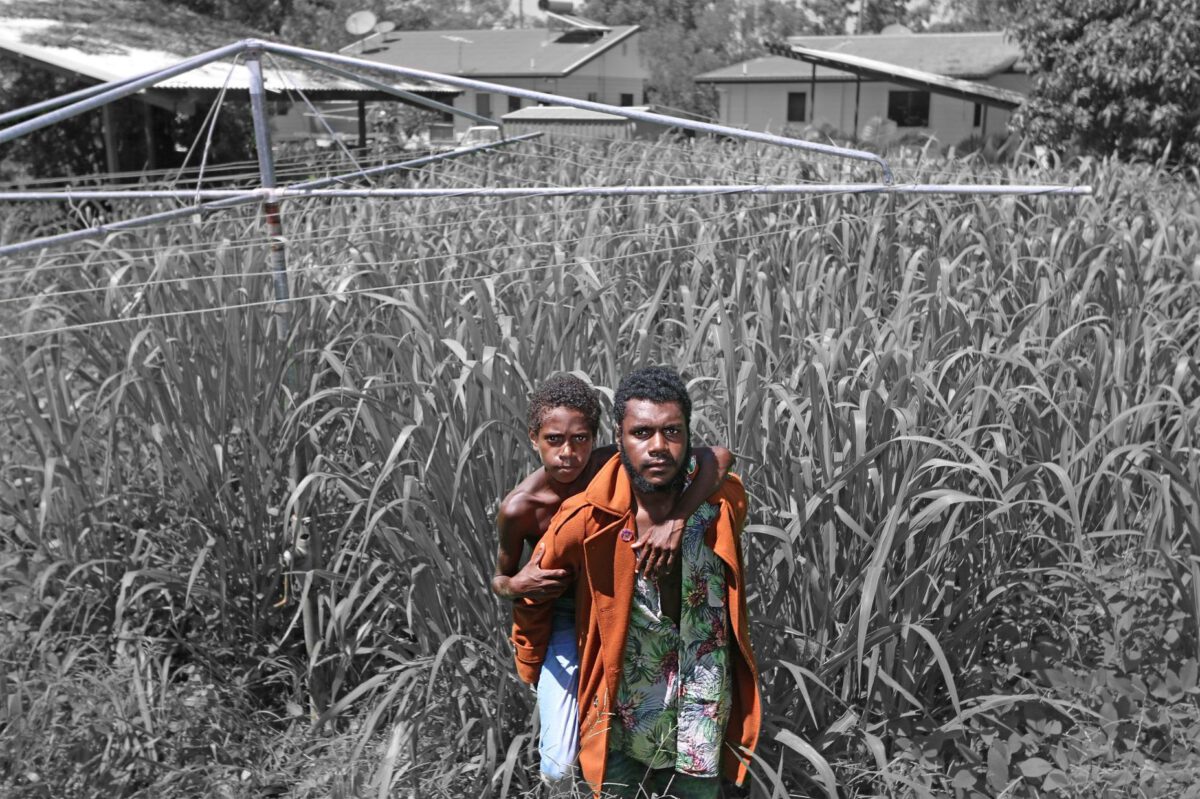
I knew I would find him back here...
he still thinking about our flower garden
we use to have, aye Mick?
And over there was where we tried to grow
vegetables, beans and pumpkin.
Mark

Patience, little grasshopper...
if you look closer
you can see him smile.
Lucinda

...like my new shoes?
They’re pretty cool huh,
make me feel like
I’m on top of the world bruh.
BJ
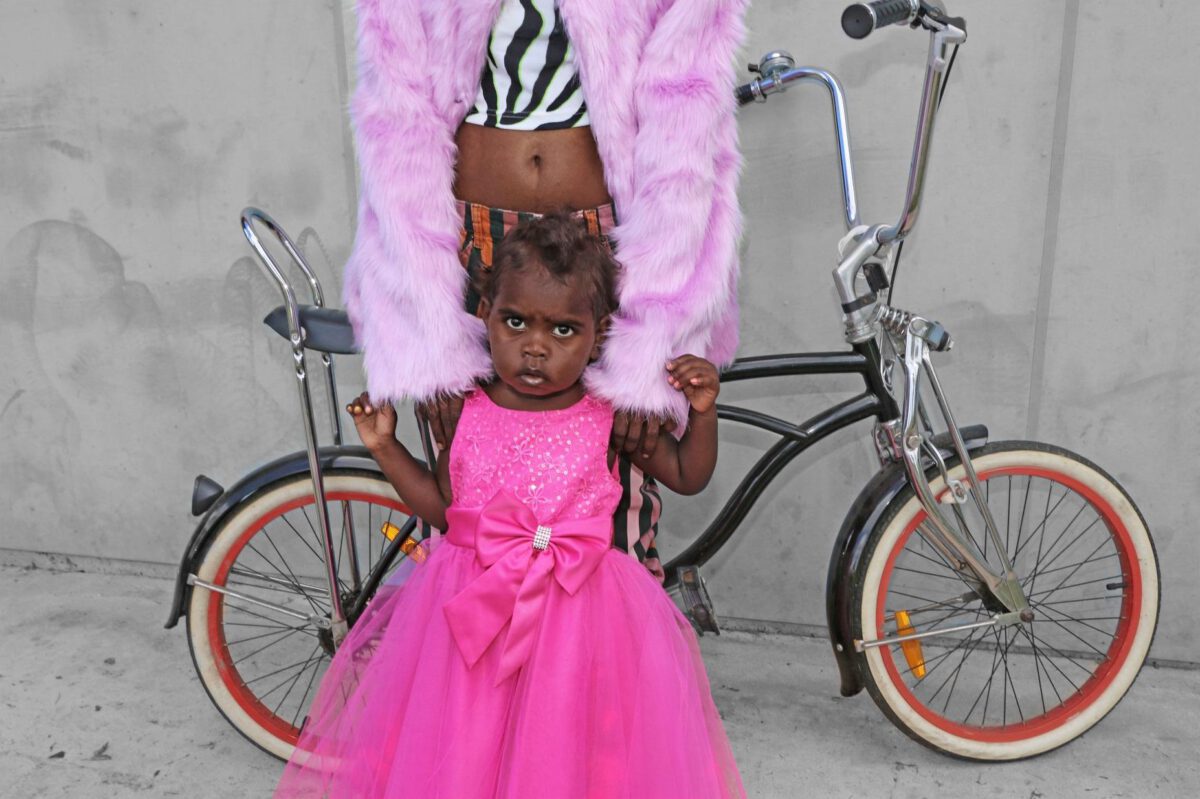
It’s her favourite colour.
Kayla
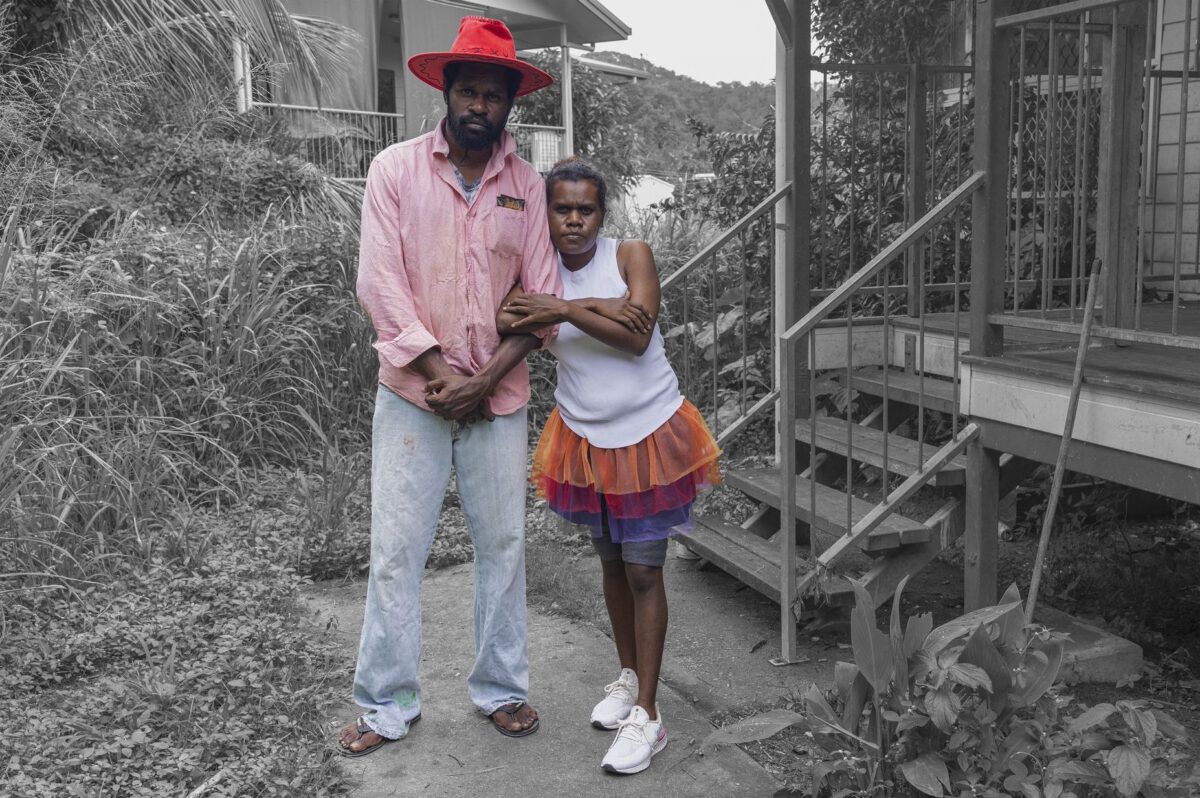
We heading up to the school,
the teachers invited everyone up
for a BBQ and join in with the kids
for colour fun day.
Gemma
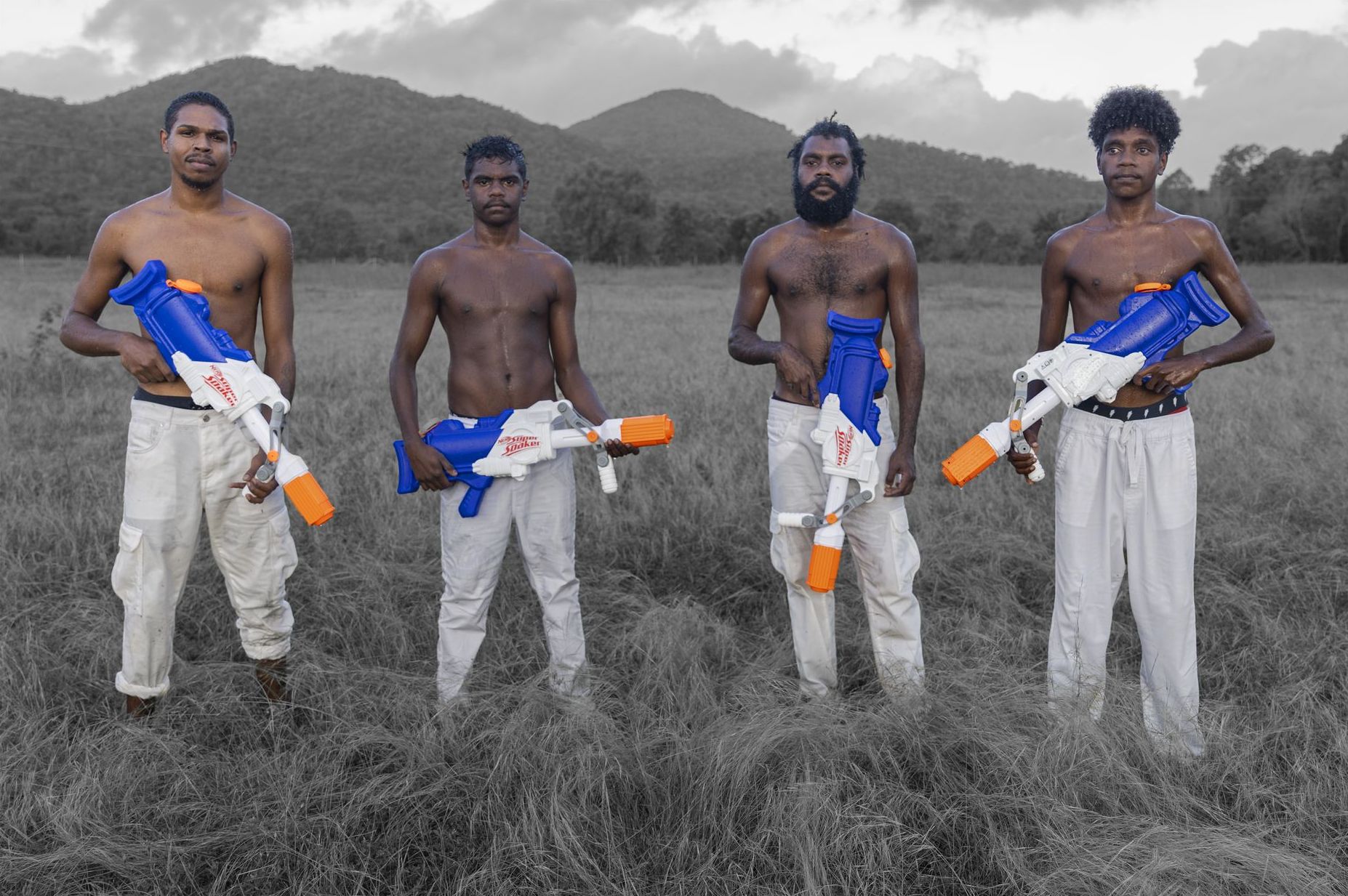
We here to have fun!
Gordon
We have our culture, but we’re also in touch with the world now: our young people are confident, energetic and kind of up to date. ‘Adolescent Wonderland’ is getting people to appreciate just being themselves.”
Naomi
A person in a rabbit suit sits on the edge of a tinny, face resting on his or her fist, perhaps contemplatively or perhaps sadly. The rabbit suit is white with a blue jacket. The tinny is blue. This photo media image is a study in contrasts: the bright white of the rabbit suit and blue boat is in the foreground. A leaf-strewn riverbank, Pandanus trees, large palm leaves spread out under a large tree and perhaps a distant house in the background are presented as a background in black and white. This image could hardly be said to represent a normative view of life in a remote Australian town with a majority Aboriginal population. So what is going on here?
I had to find out.
When you drive into Coen, a small community of 364 people, located in the heart of Cape York Peninsula, the first thing you see are the mountains, engulfed in thick bushland that leads into fresh streams of running river water. For my people, the Kaantju people, whose ancestral lands surround this area, this is our home. This is the place where my mother, her mother and her mother before her lived. Generations of kin have lived on this Country – their memories forever etched into the fabric of the surrounding landscapes.



